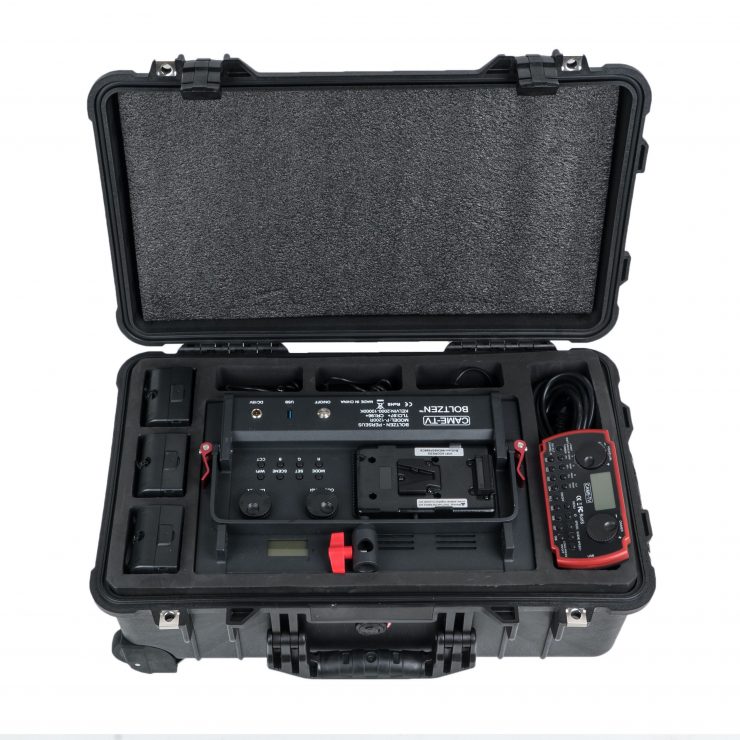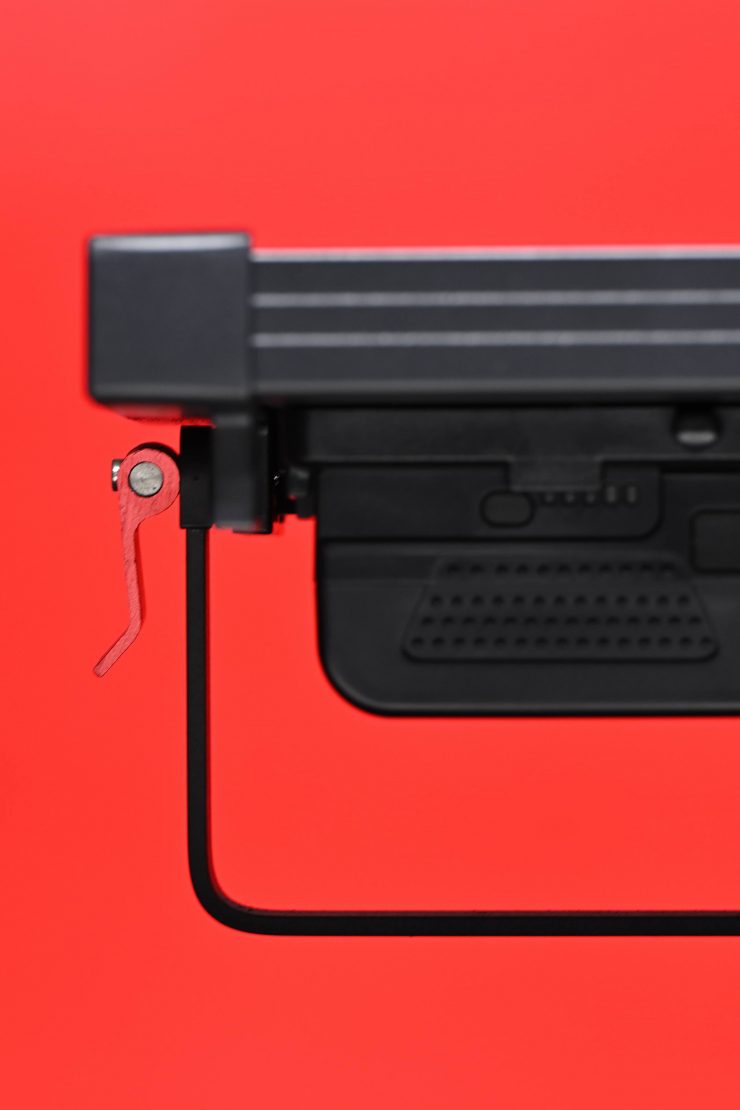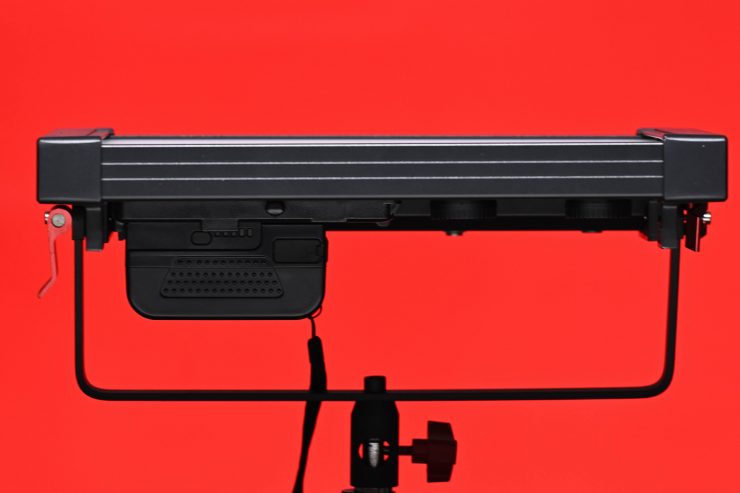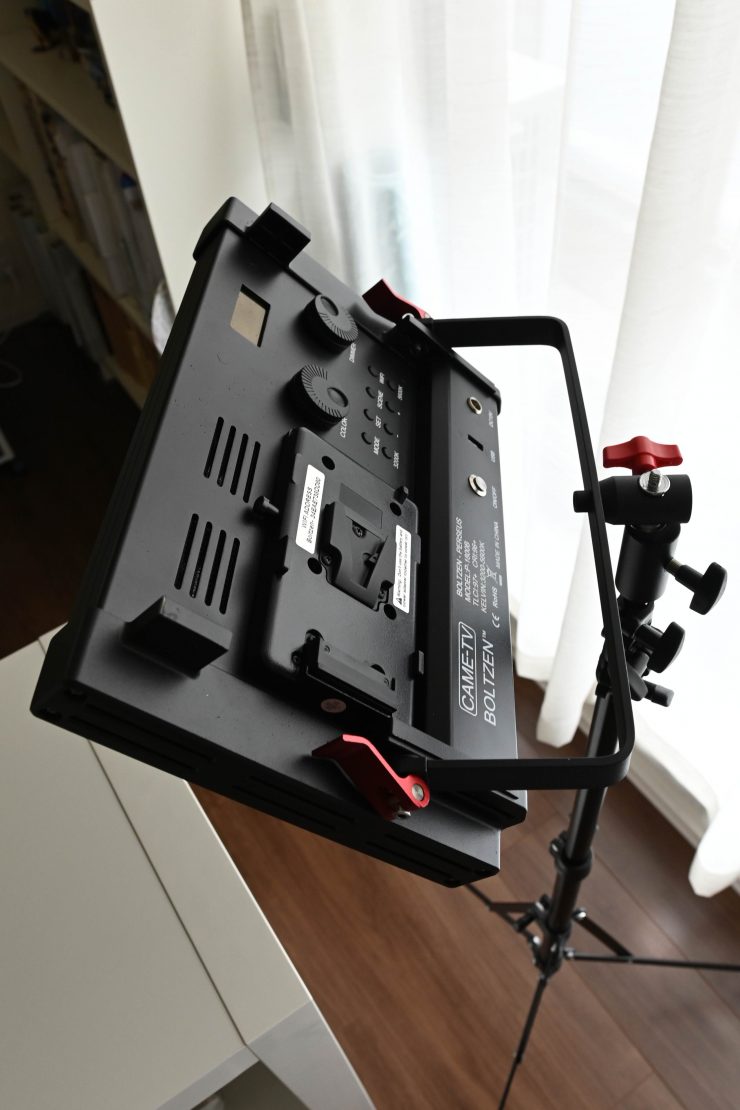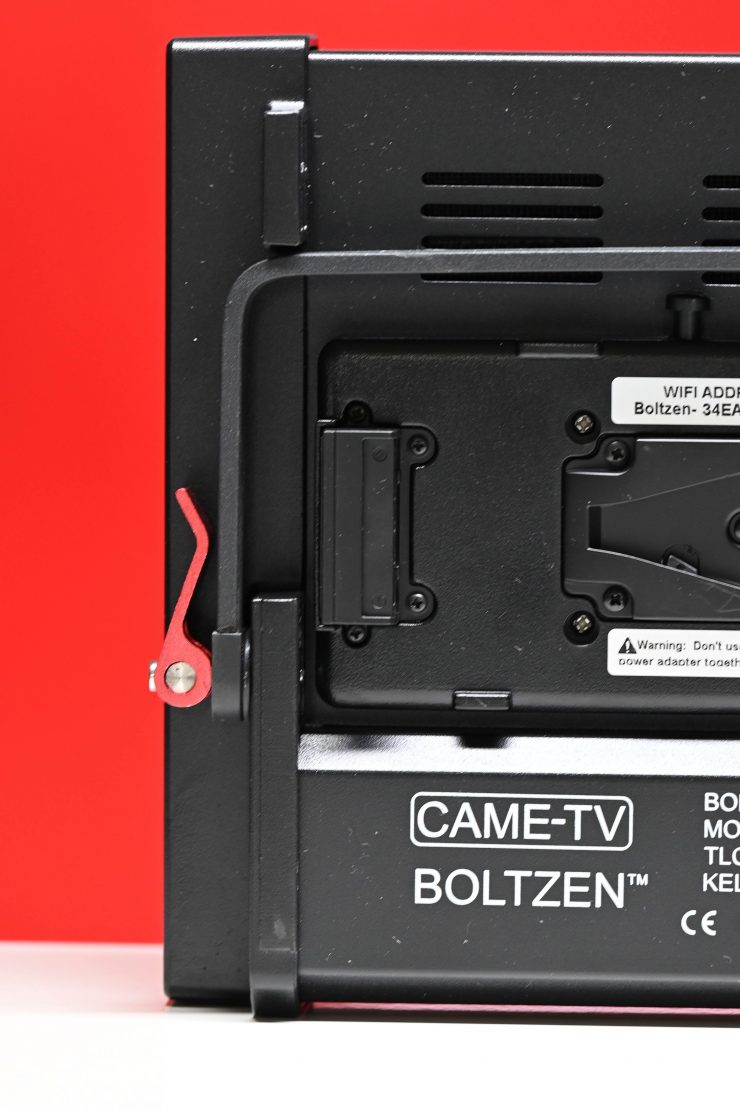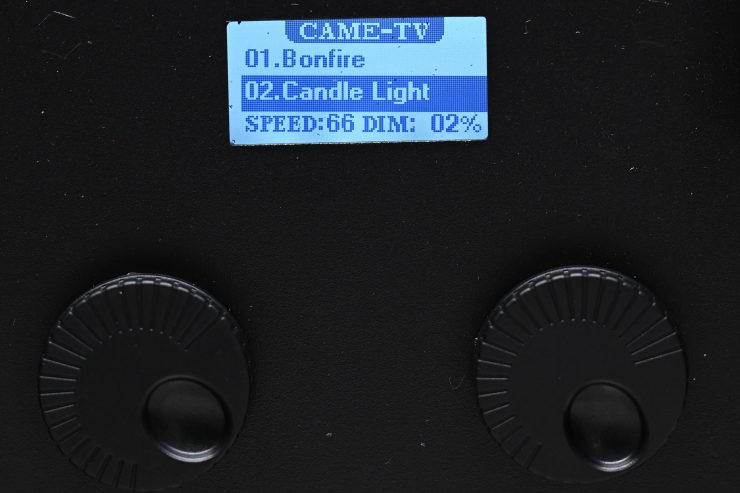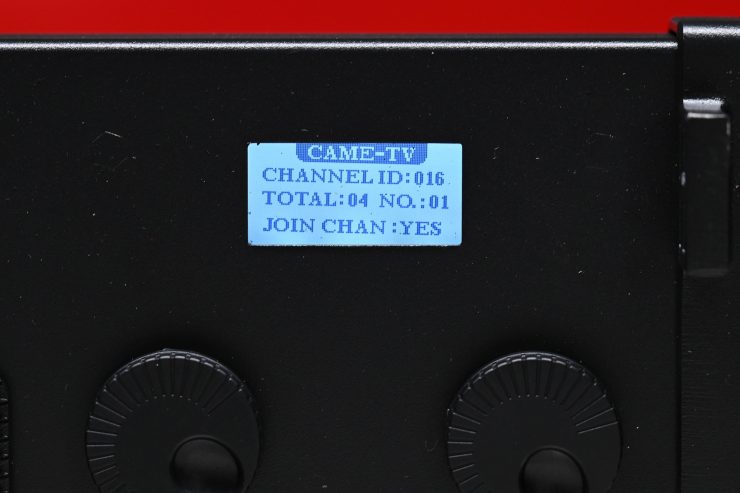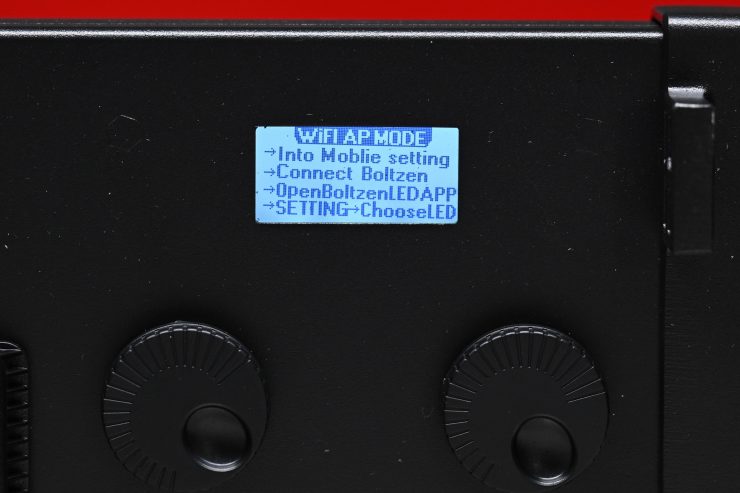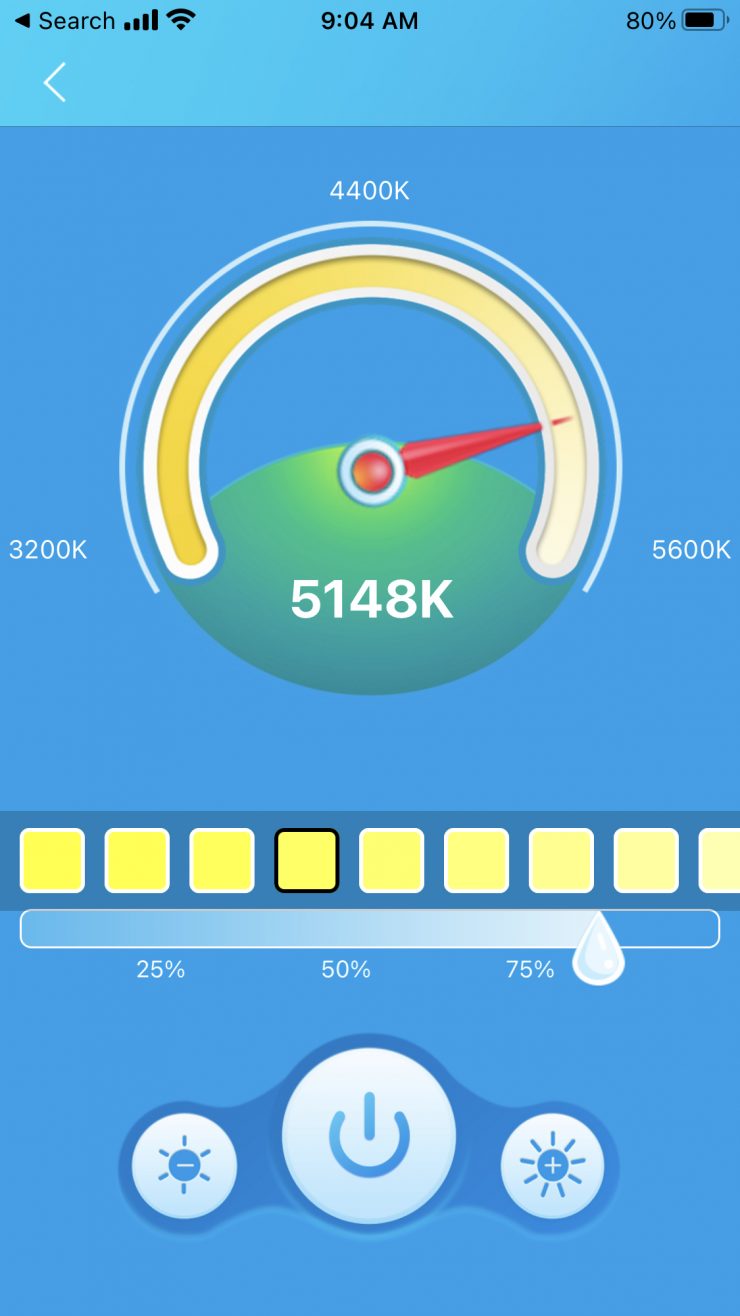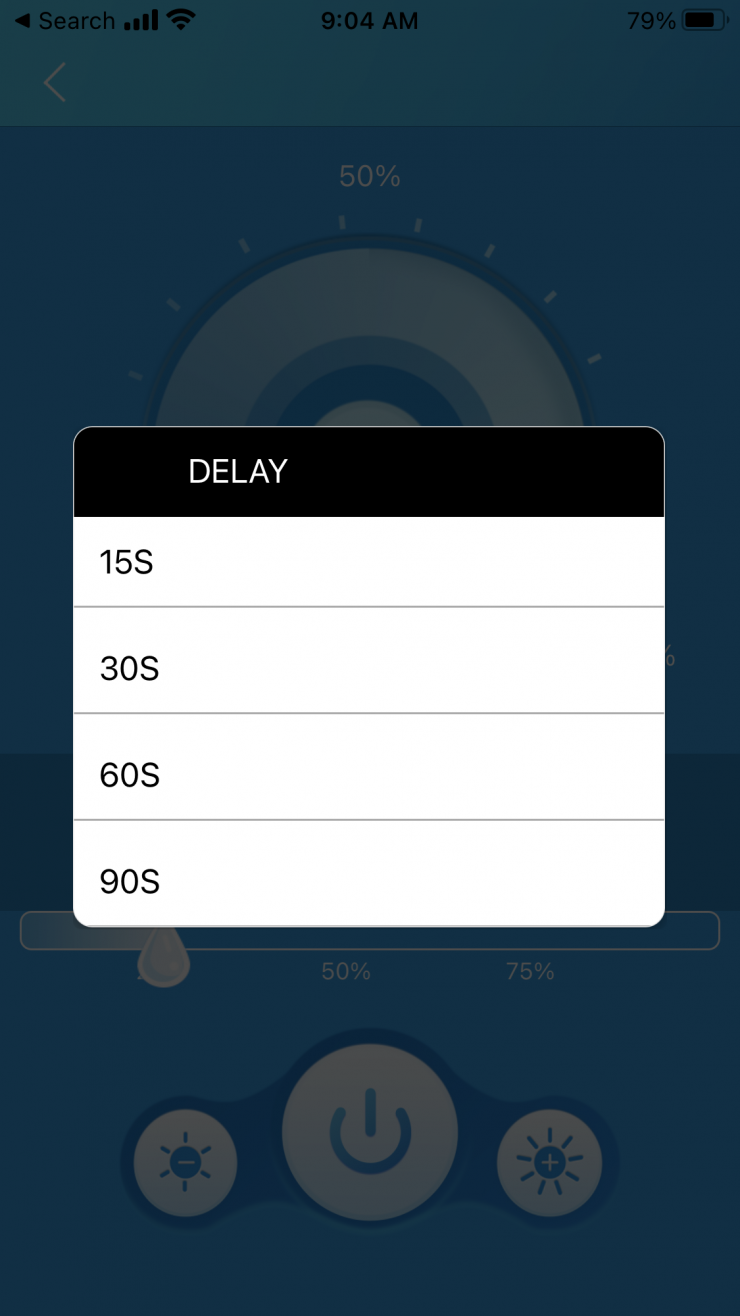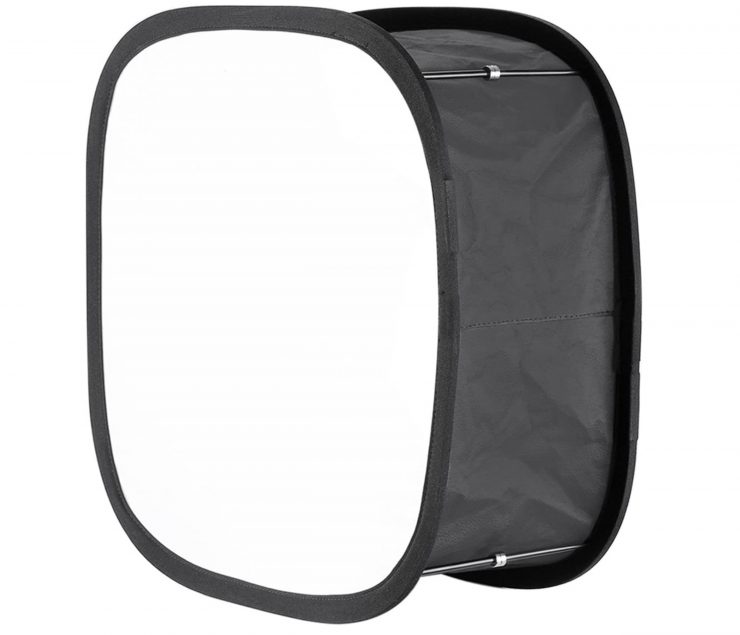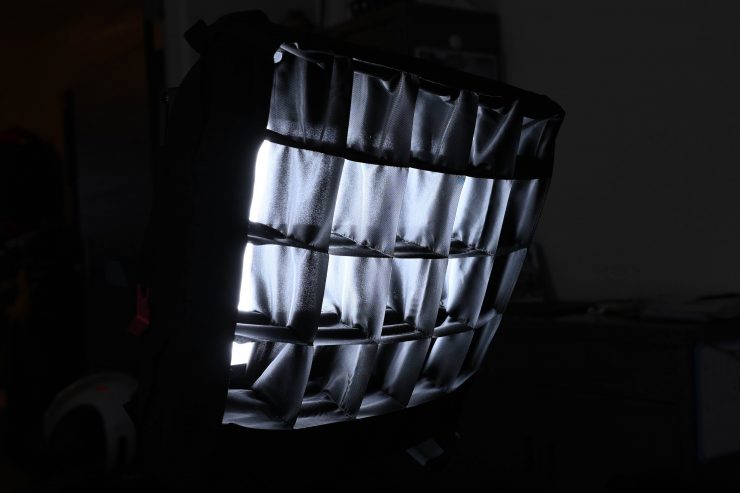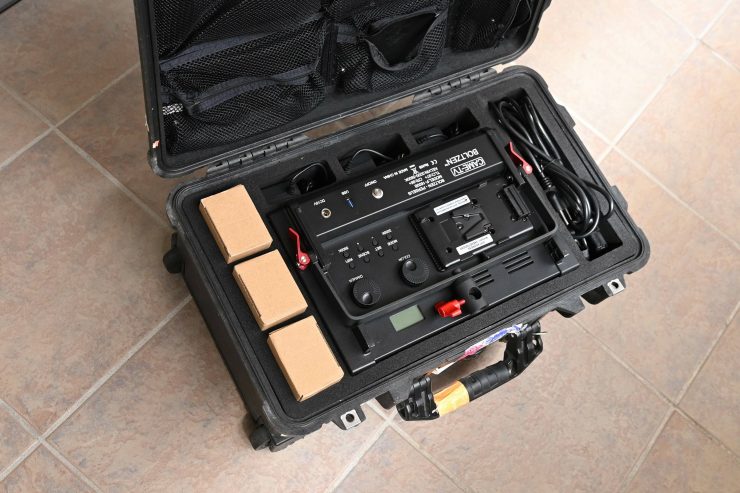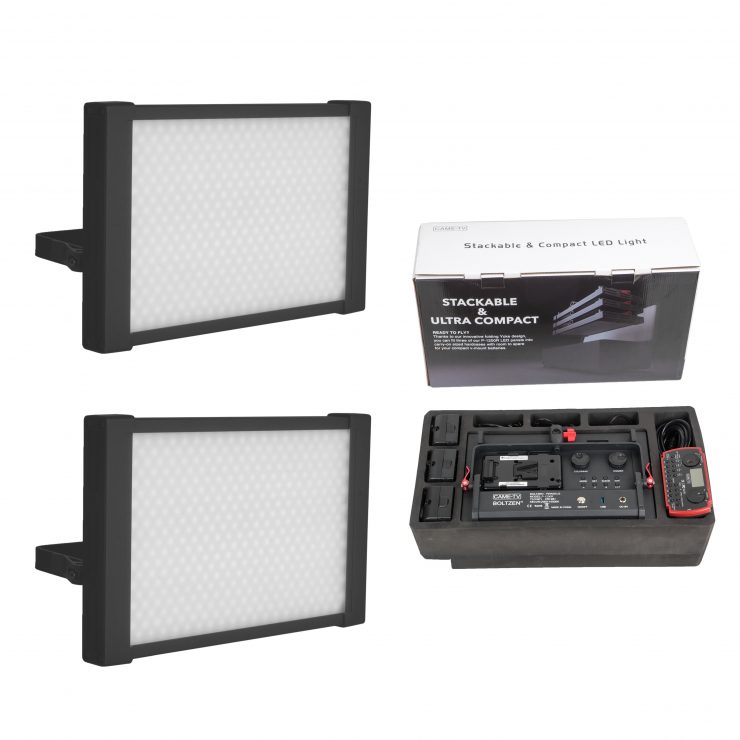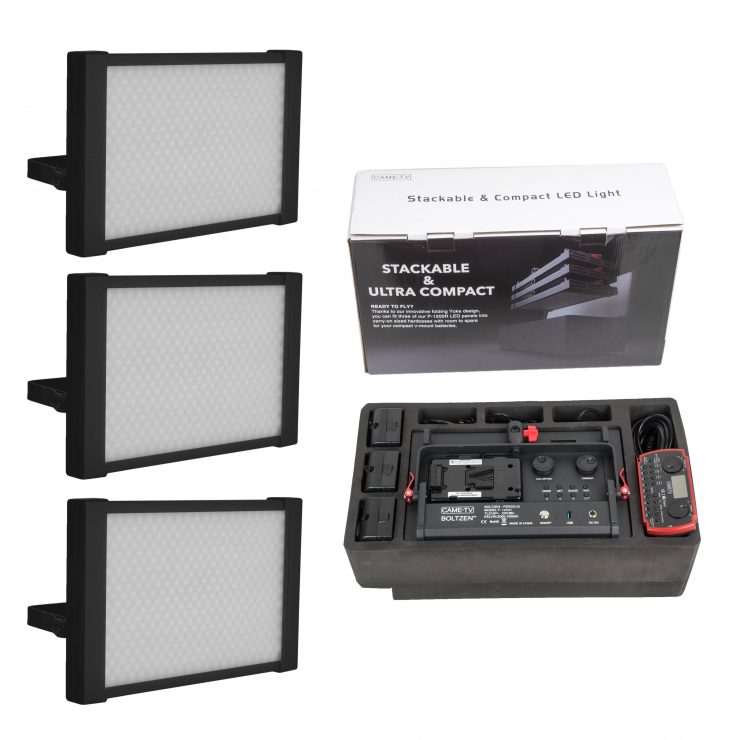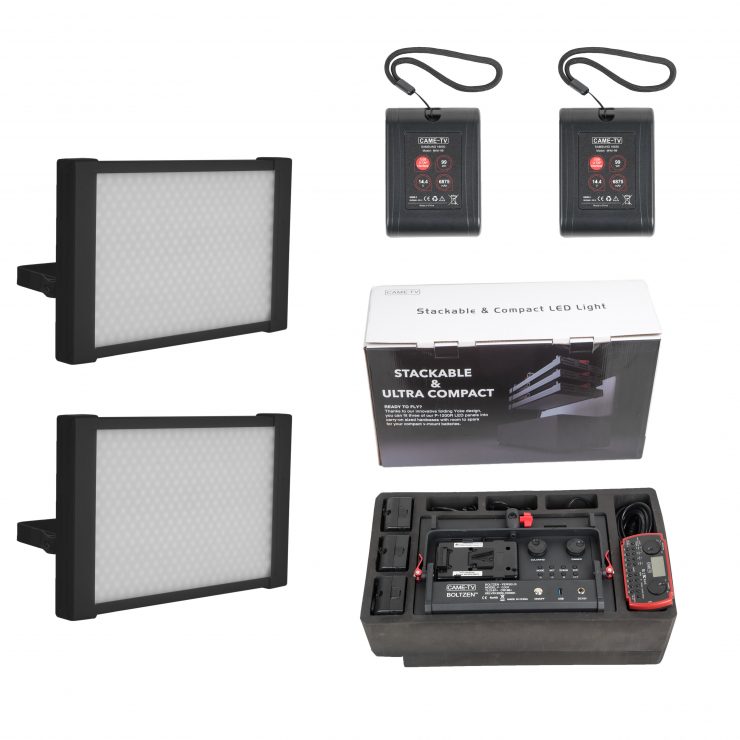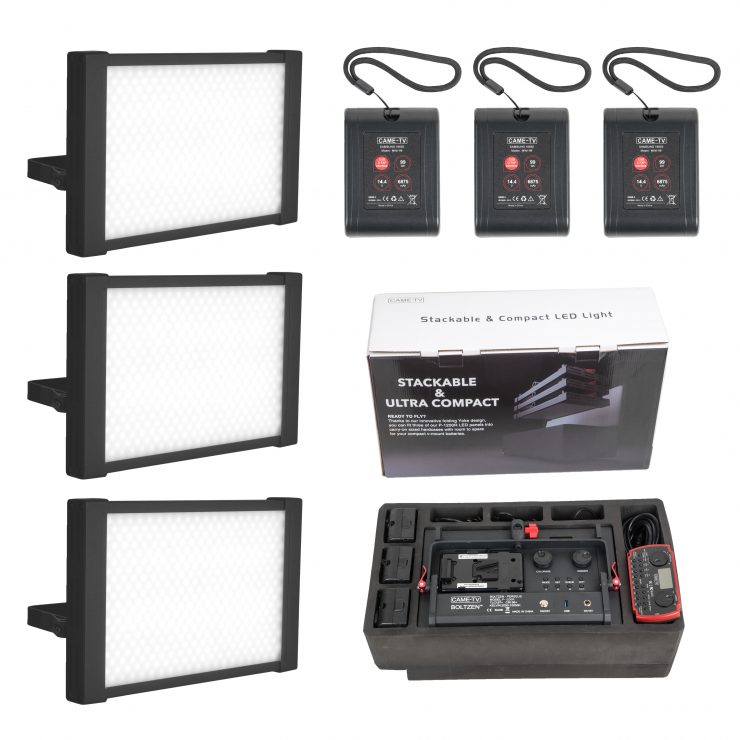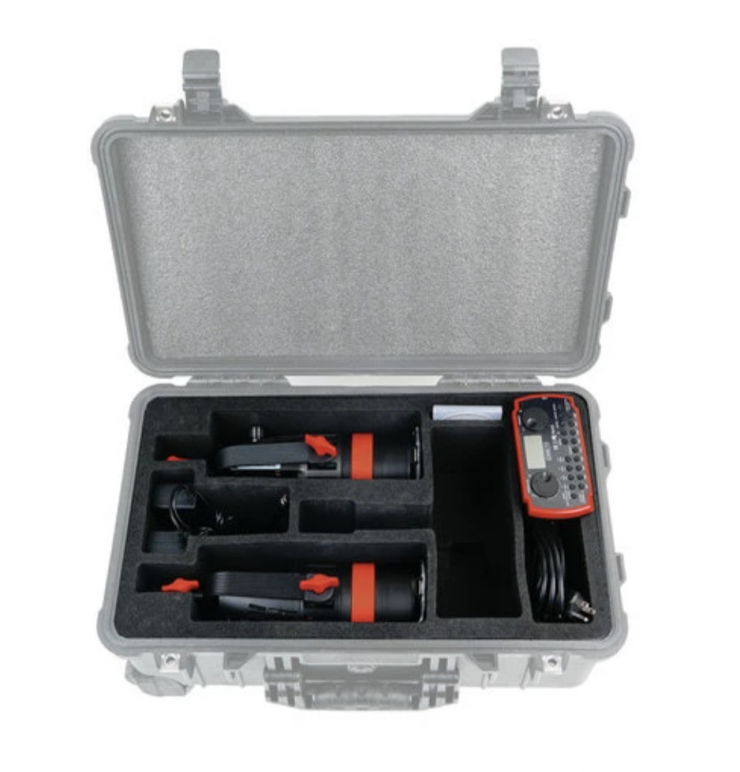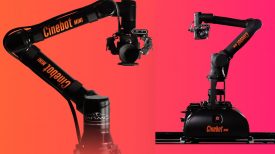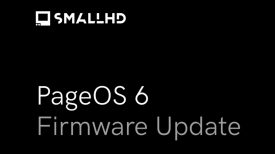
The CAME-TV Boltzen Perseus Bi-Color 55W SMD Soft Travel Lights look to be a good solution for anyone who wants a compact, affordable, self-contained lighting travel kit.
The lights feature a unique yoke that allows them to fold flat so that the panels are easy to stack on top of each other. This allows three lights and accessories to be placed inside a relatively small-sized hard case.
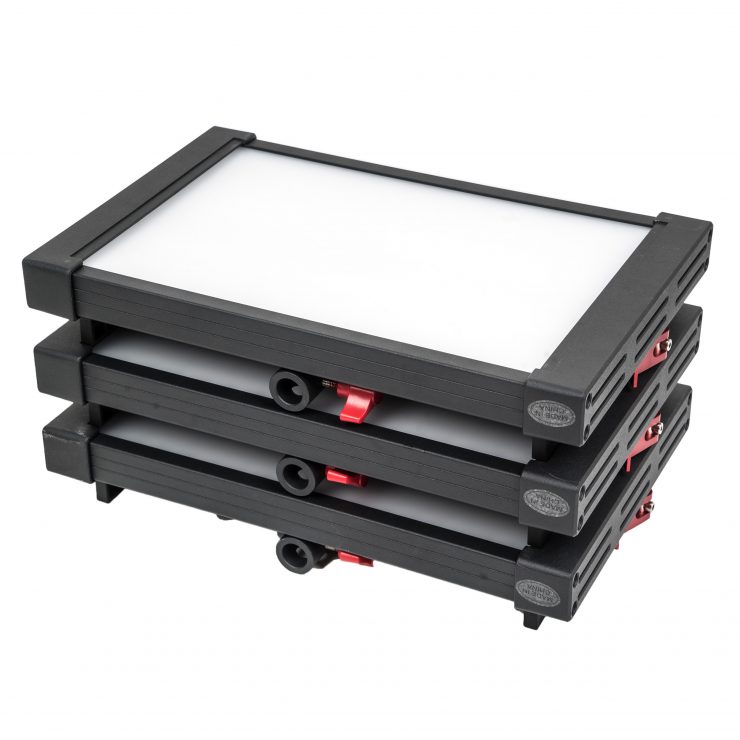
Being able to stack three lights that can be run via flight-safe batteries together inside a relatively compact case makes a lot of sense if you travel a lot and operate as a one-man band or part of a small crew. I am not sure why we haven’t seen more manufacturers create lighting kits for this very reason.
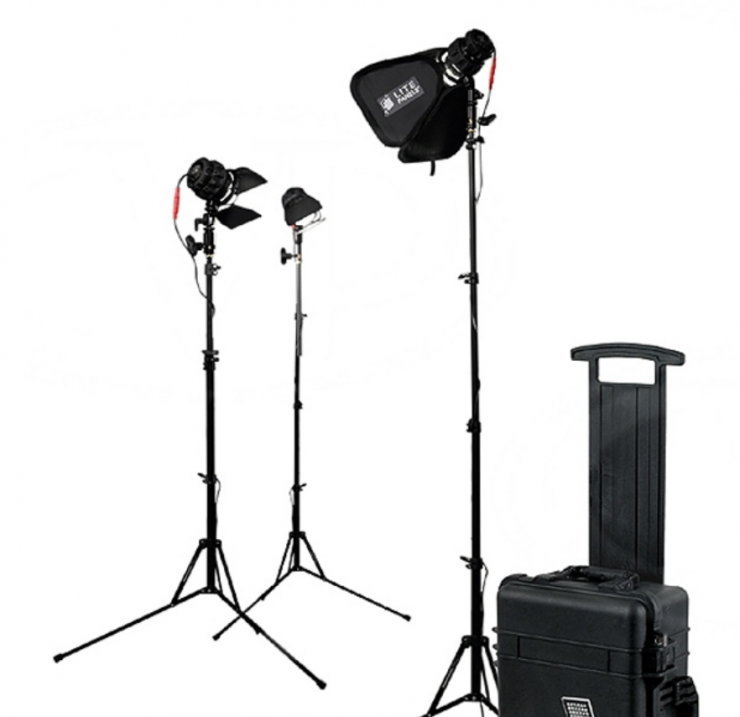
Way back in 2012 I bought a Litepanels Sola ENG lighting kit that I used to take on assignments around the world. This was a self-contained three-light kit that came in a hard case and could be powered via flight safe batteries.
Traveling lighting kits are often a compromise between size, power draw, and output. You usually can’t have your cake and eat it too.
So, let’s see if the CAME-TV Boltzen Perseus Bi-Color 55W SMD Soft Travel Lights are up to the task of being a good traveling lighting solution. For this review, I will be looking at the P-1800B-3BATTERY Kit.
KEY FEATURES
- 3x Boltzen Perseus Bi-Color 55W SMD Soft Travel Lights
- 3x CAME-TV Mini 99Wh V-Mount Batteries
- Color: 3200K-5600K
- TLCI 97+, CRI 96+ (claimed)
- Dimming: 0-100%
- App Control
- Remote Control
- FX Modes
- 55W Draw
- AC (110V-240V) DC (12V-24V)
Concept
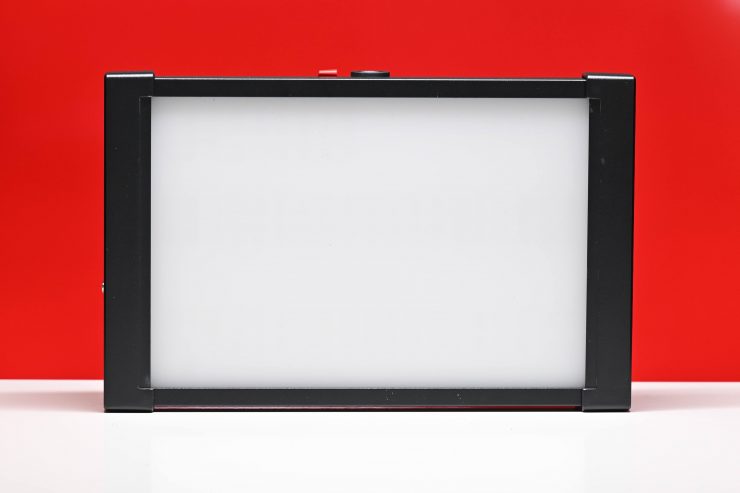
The concept was to make affordable, good color quality, decent output panel lights that were suitable for travel.
They needed to have a low power draw so they could be run via flight-safe batteries for long periods of time. They also needed to feature a design that allowed multiple lights to be packed down into a travel case.
Build Quality
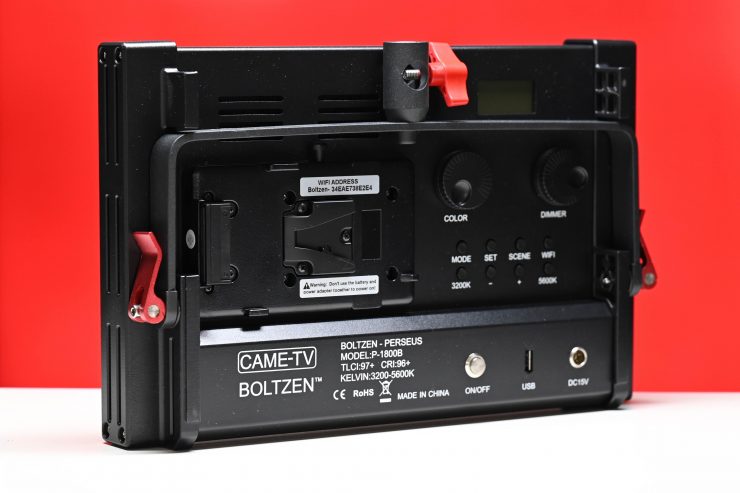
The build quality of the CAME-TV Boltzen Perseus Bi-Color 55W SMD Soft Travel Lights isn’t going to win any awards.
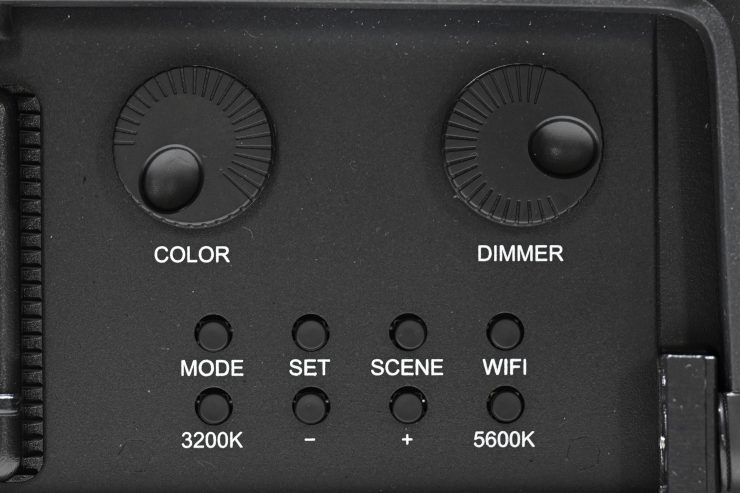
While the housing seems reasonably robust, the dials and buttons are cheaply made and they are not very tactile.
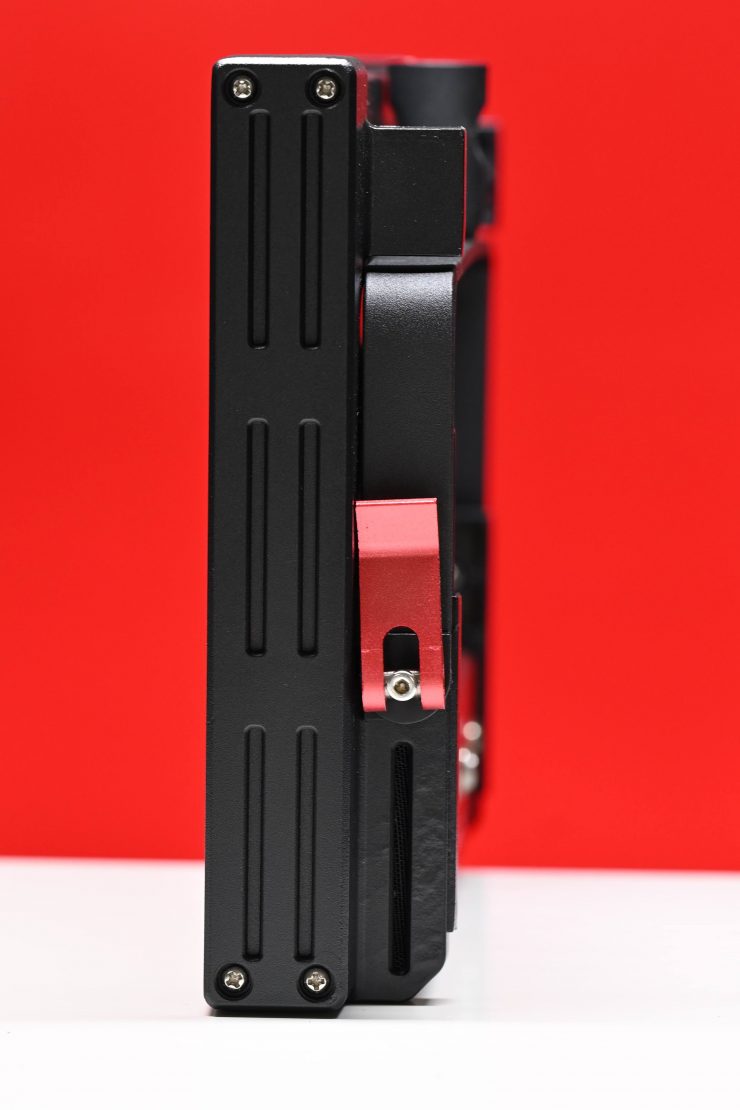
The locking mechanisms and the yoke frame are nice and robust, but because of the way they work, I think you are going to need to tighten them with an Allen key every now and then.
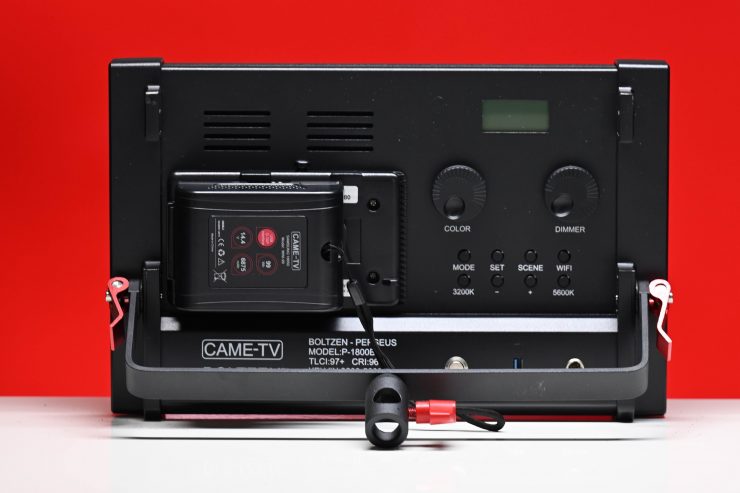
There are two things you need to be aware of when it comes to the design of the folding yoke frame. The first is that you need to loosen both locking mechanisms to make any adjustments to the angle. The second is that the range of motion of the yoke frame is extremely limited. If you place the yoke frame on a light stand in the normal vertical position, you can’t actually angle the light down at all.
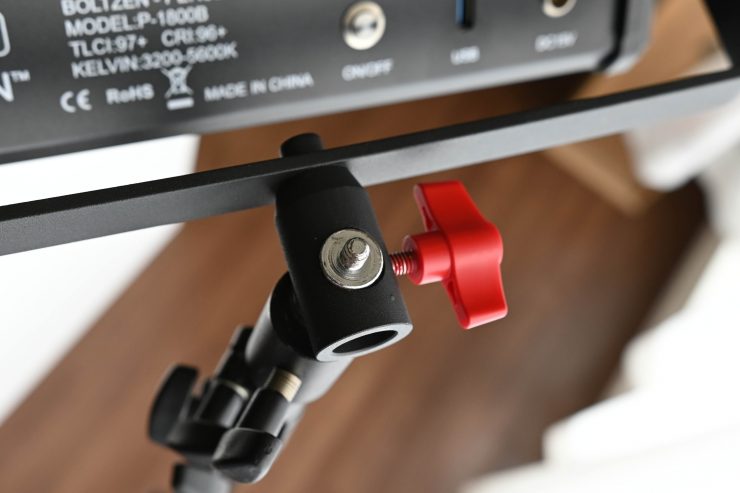
If you want to angle the light down you have to place the yoke frame on a light stand in the horizontal position.
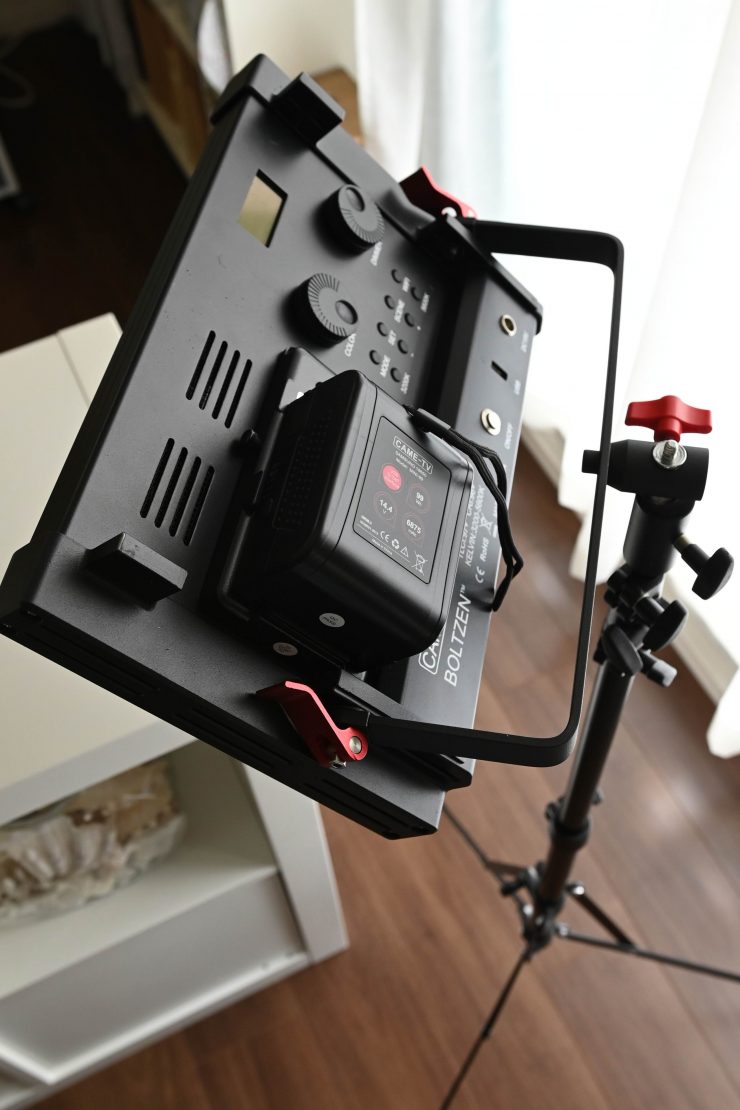
Now, you need to be aware that if you are placing the yoke frame on a light stand horizontally, and you are using a V-lock battery on the light, an ultra-lightweight light stand may have trouble supporting the weight.
The yoke frame is also on a type of ratchet, so you may not be able to get the exact angle you want.
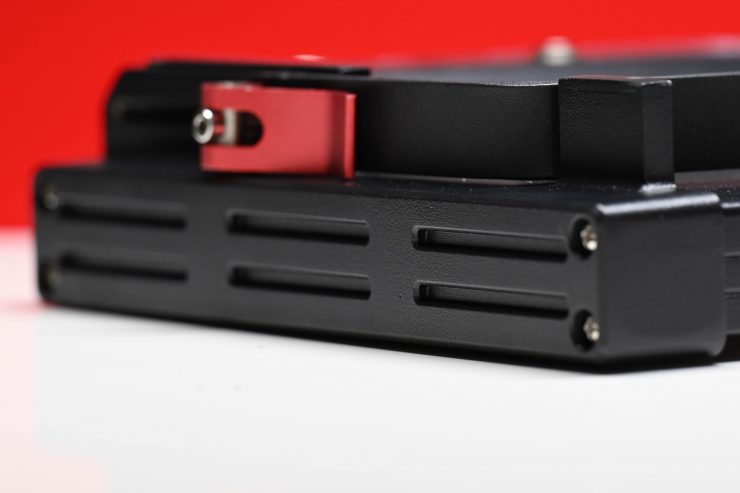
To keep the weight down, CAME-TV has obviously had to cut a few corners. In saying that, I still think the lights would survive the rigors of field use, however, that is impossible to know without using them for many months.
The cable that goes to the power supply isn’t long enough and you can’t place the light up high and have the power supply sitting on the ground. I wish companies would put lanyard-style hooks on power supplies so you could attach them onto light stands.
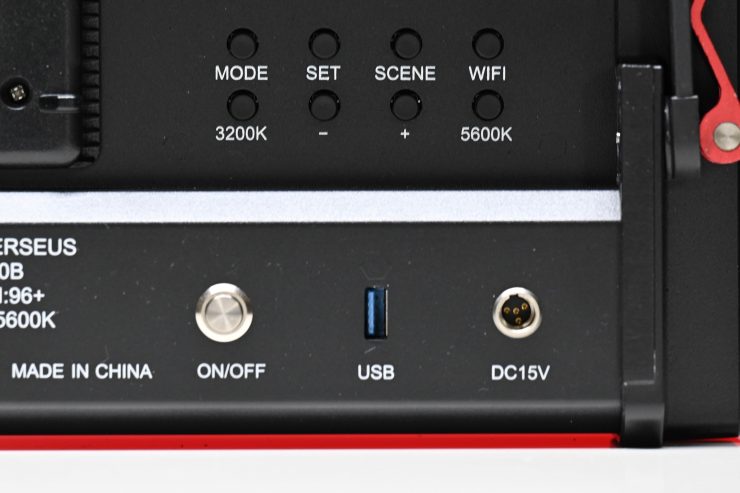
CAME-TV still chooses to use these small-sized 3-pin power inputs which I am not the biggest fan of.
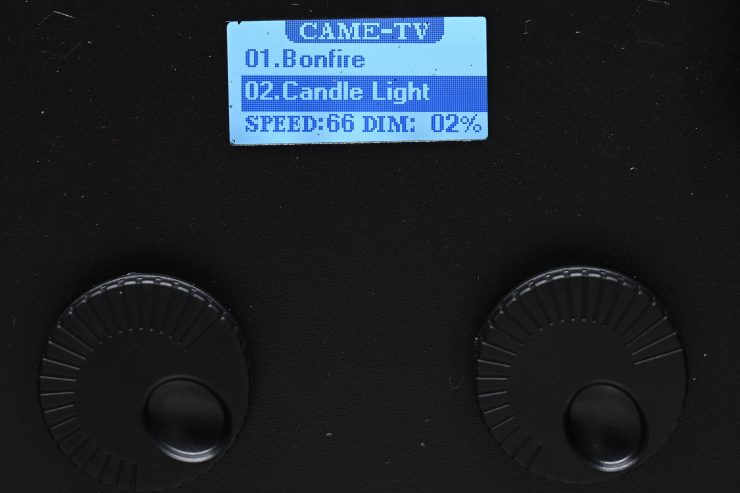
The LED display is not great and the information that was coming up on the screen wasn’t even straight. Attention to detail and consistency from one light to another is usually something you are not going to find with ‘budget’ fixtures.
Design
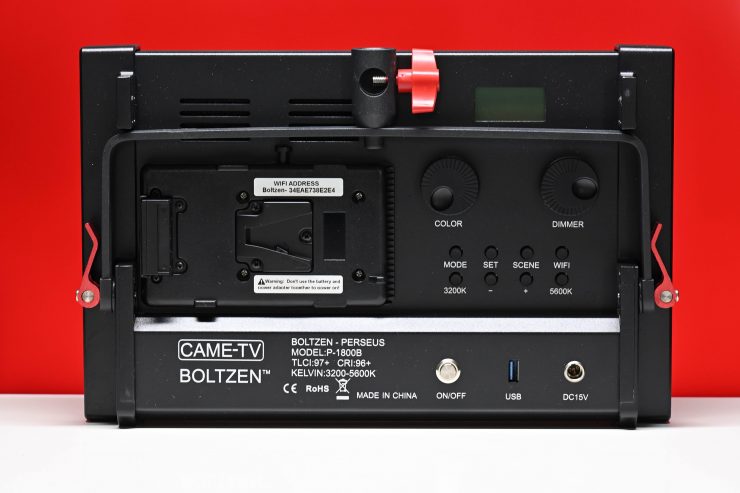
At first glance, the Boltzen Perseus Bi-Color 55W SMD Soft Travel Lights appear to look like most other small-sized LED panel lights, however, as I previously mentioned, they feature a clever yoke frame design.
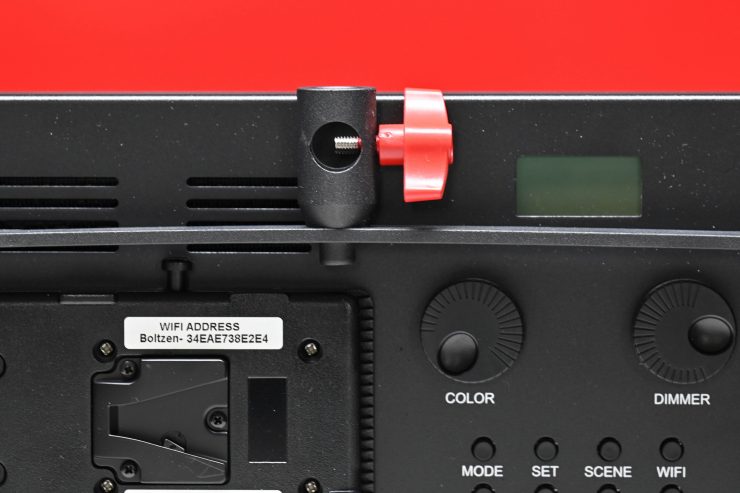
The biggest problem with packing lights usually revolves around the yoke frame. Yes, you can remove a lot of the yoke frames, however, that doesn’t help that much in reducing the overall footprint.
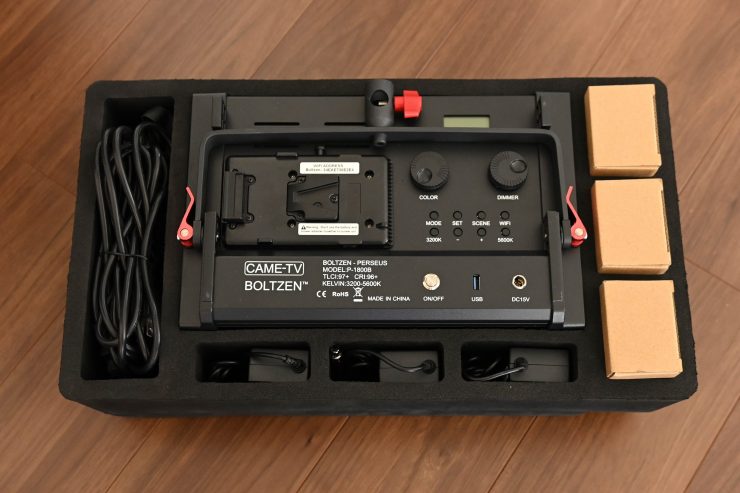
By going with a clever yoke frame design, you can stack the lights so that you can fit three of them in a small-sized Pelican case.
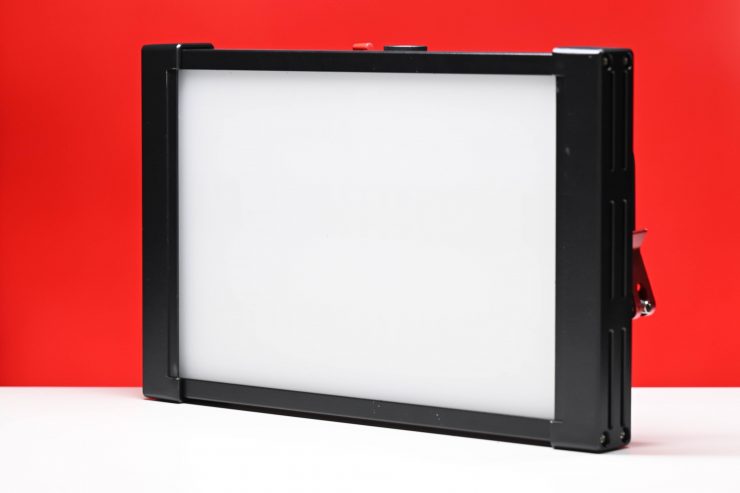
As far as the actual design of the lights is concerned, they are self-contained fixtures where everything is built-in. This is important with travel lights where you may not be getting a lot of set-up time. Having the ability to pull a light out of a case and put it on a lighting stand and just turn it on can save you a lot of time.
Weight & Size
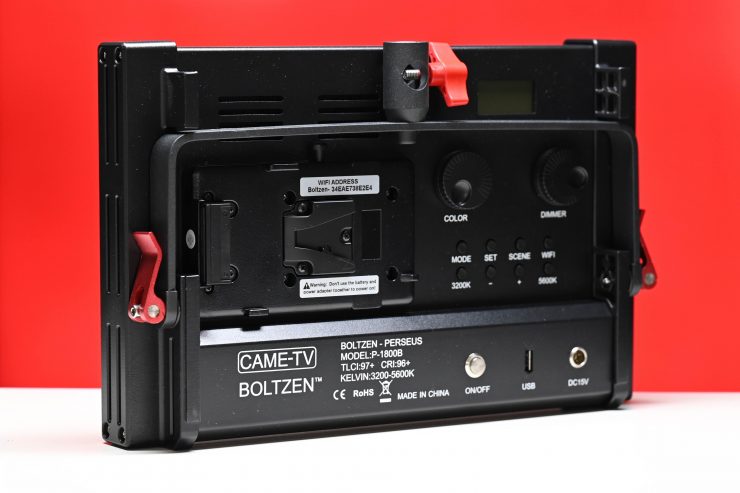
The individual Boltzen Perseus Bi-Color 55W SMD Soft Travel Lights weigh in at 1.9kg / 4.18lb. This means you can use them on lightweight, small-sized light stands.
The Boltzen Perseus Bi-Color 55W SMD Soft Travel Light Kit includes 3x lights, 3x power supplies, remote controller, 3x CAME-TV Mini 99Wh V-mount batteries, and the custom foam cut out weighs in at 10.4kg / 22.92lb. You still need to factor in the weight of a Pelican Pelican 1510 or 1535 hard case. A Pelican 1510 will add an additional 5.4kg / 12 lb to the equation. What is important to remember is that this kit doesn’t come with light stands, although, three lightweight light stands could be squeezed into a tripod bag/case, etc.
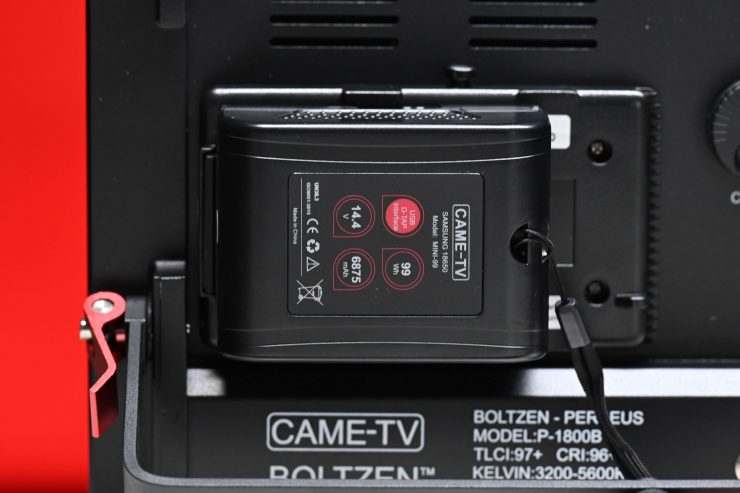
If you are going to check in this combination on a flight you would have to remove the three Mini 99Wh V-Lock batteries. Speaking of the batteries, I previously reviewed them on the site and I found that they were really well made and well priced.
Power Draw
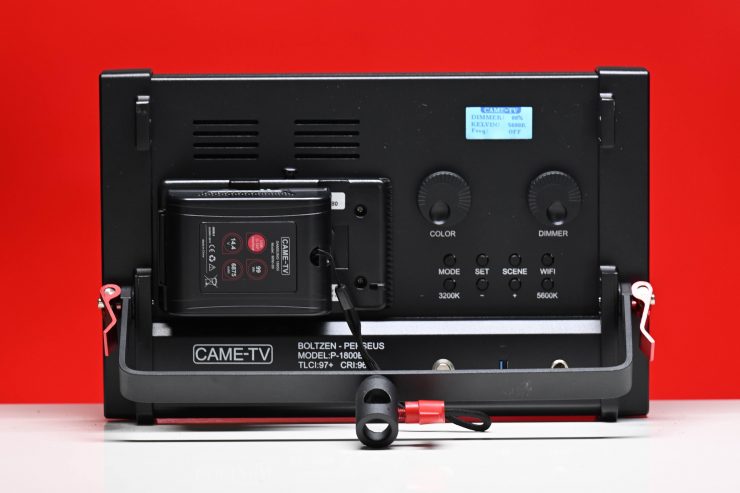
The Boltzen Perseus Bi-Color 55W SMD Soft Travel Lights only draw 55W so they are very easy to run remotely for long periods of time using flight-safe batteries.
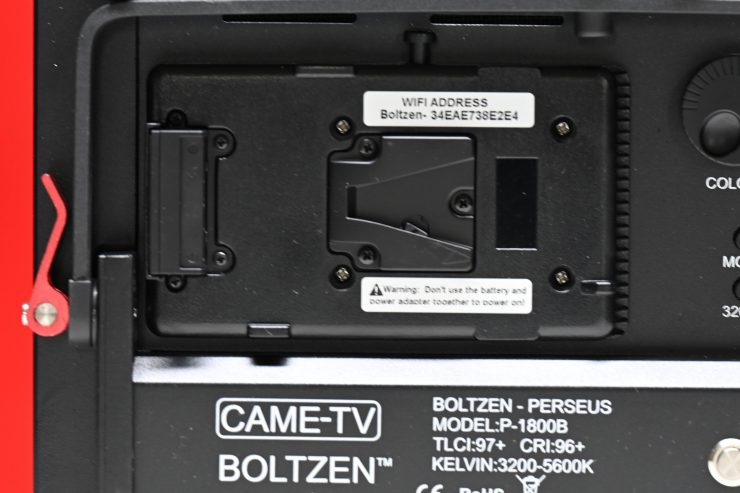
On the back of each light, there is an integrated V-mount battery plate. Unfortunately, CAME-TV doesn’t make AB Gold Mount versions, however, you could simply just buy a third-party V-mount to AB Gold Mount adapter plate if you needed to.
The lights can also be run off the included AC adapters.
Controls & Menu System
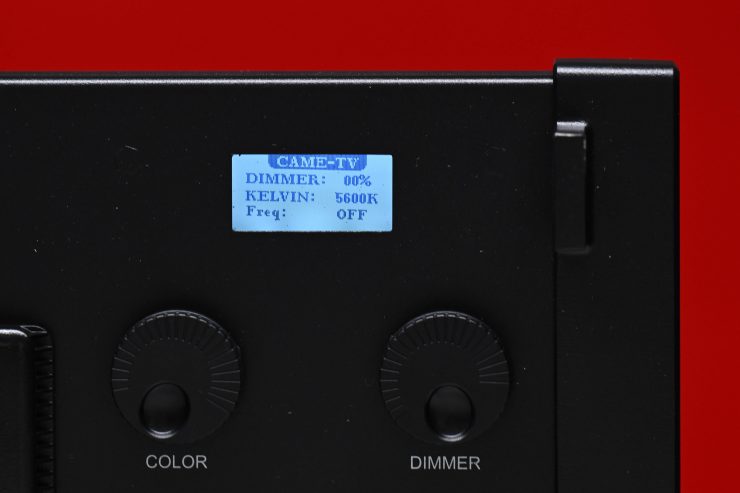
The rear LCD screen is very, very basic and it just shows you the light’s output intensity as a percentage and the Kelvin color temperature. The screen looks like it came from an 80’s Nintendo device. While it doesn’t affect how the light works or performs, it did still bother me. As you can see, the screen isn’t even positioned correctly and it isn’t straight. As I mentioned in the build quality section of this review, with a lot of cost-effective lights you will often find there is a lack of attention to detail.
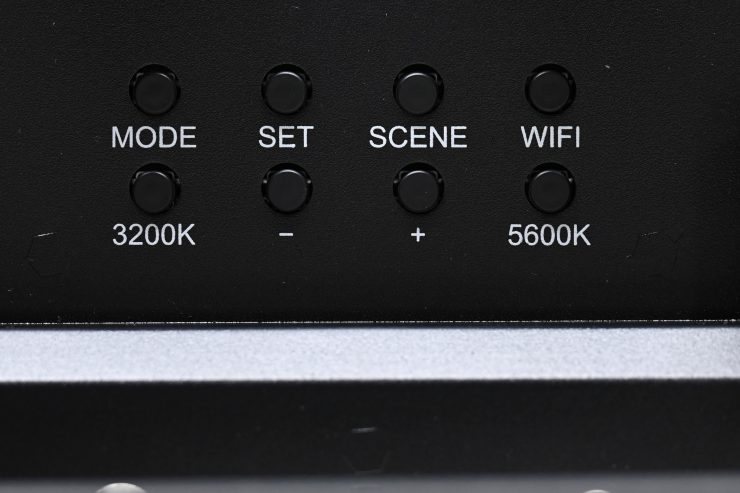
I like that there are two dedicated buttons for setting both 3200K and 5600K. It is also nice that you can adjust the Kelvin color temperature using the +/- buttons as well as the dial.
With a good light, you shouldn’t have to read a manual to work out how to operate it. You should be able to turn it on and use it straight away. In that respect, the CAME-TV is about as easy and straightforward as you are likely to find.
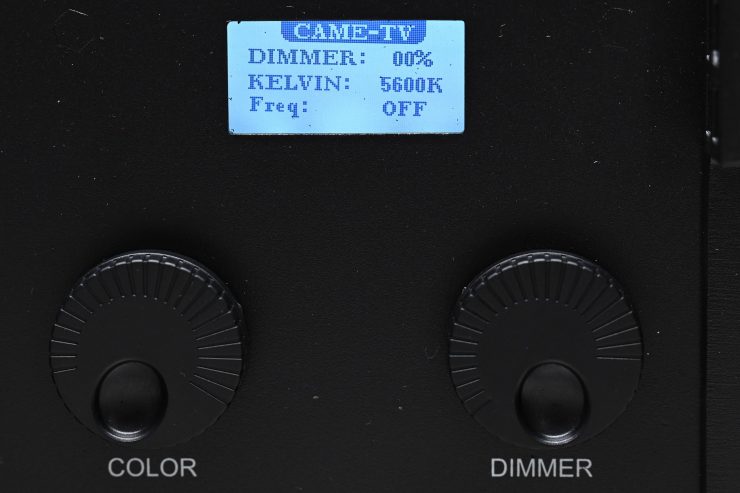
The menu is pretty basic, but you can adjust the various FX modes, change the channel for the remote controller and turn on the WiFi.
WiFi App
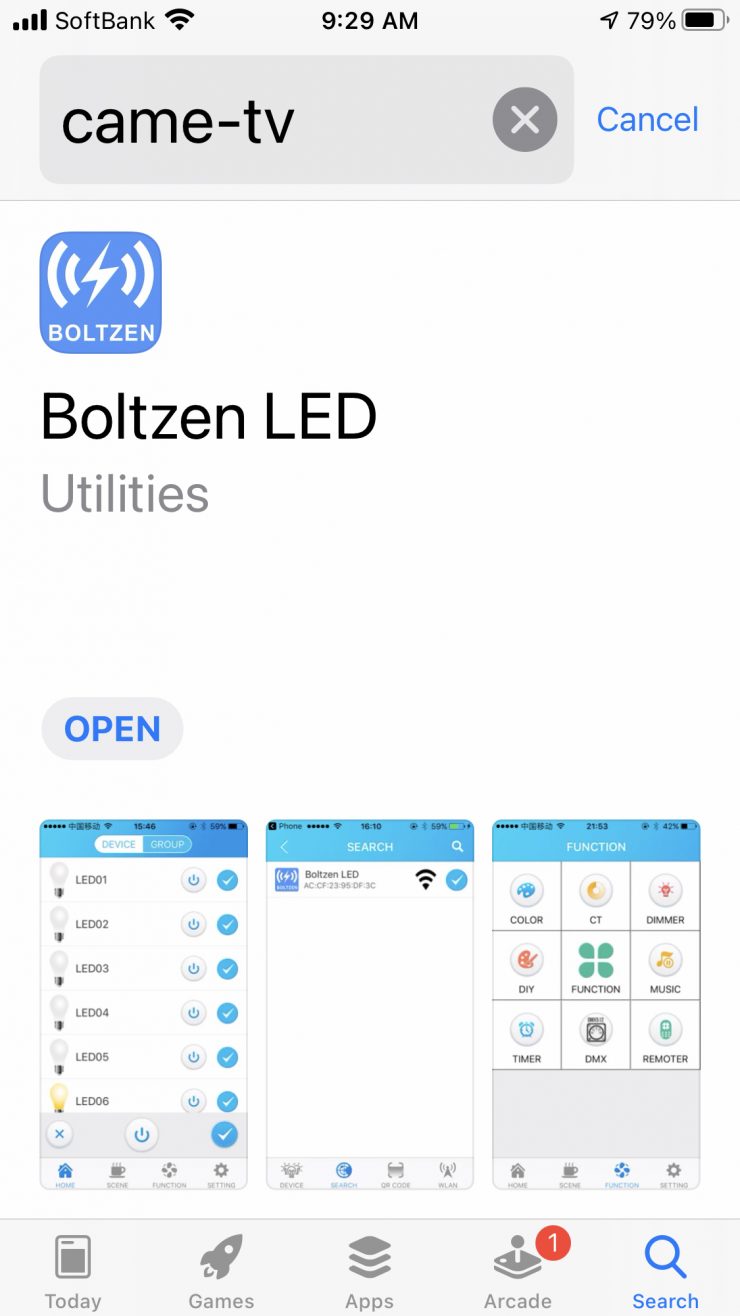
The light can be controlled via WiFi using the Boltzen LED App.
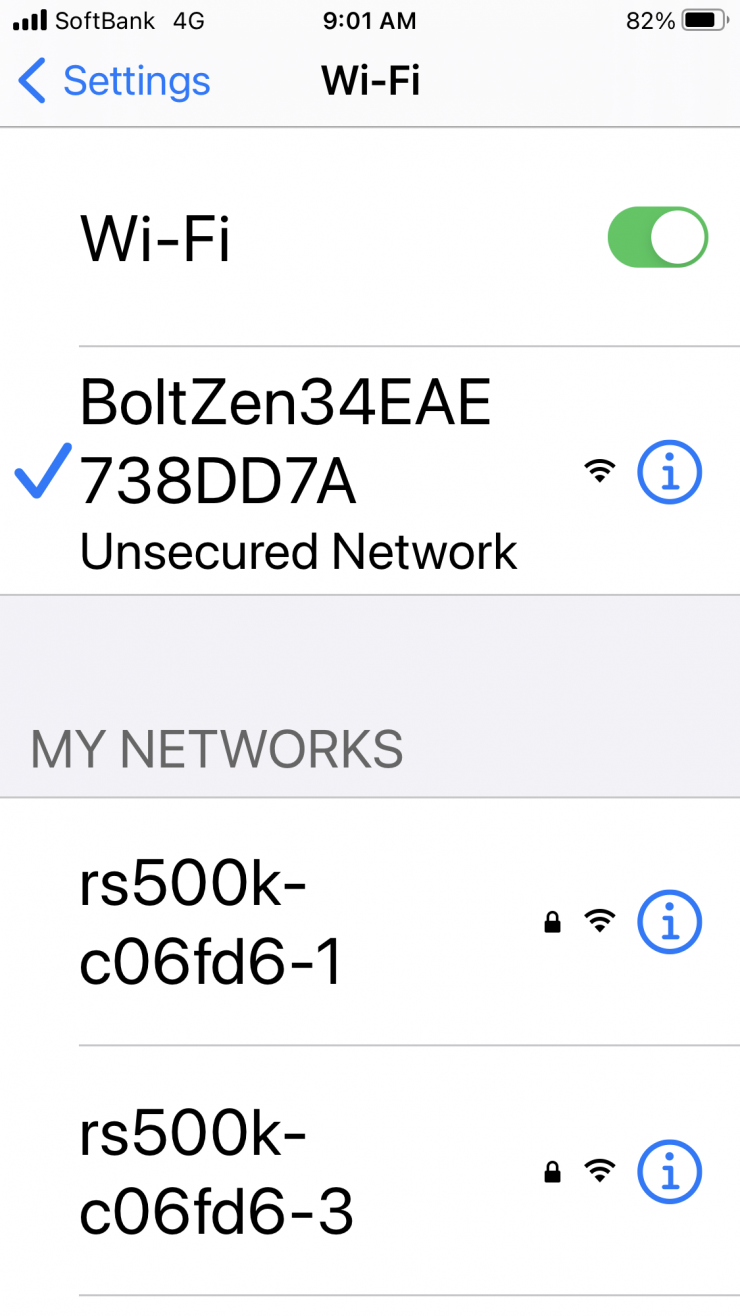
I found the App frustrating to set up and connect to. It took me multiple goes to get the light’s WiFI to show in my phone. I kept having to turn the light on/off, pull out the power cable and restart the WiFi mode on the light. If you are going to use an App it has to be straightforward to set up and use.
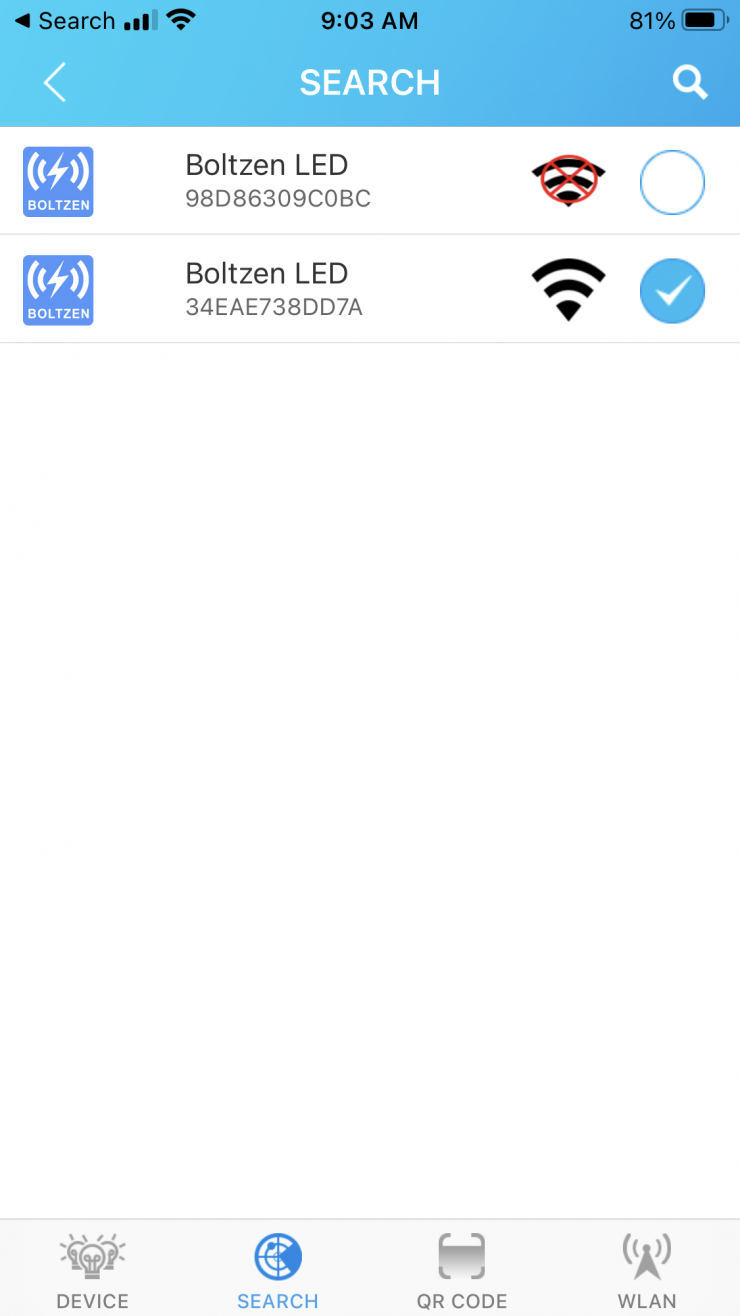
Once you have connected to the WiFi network that the light creates you then need to go into the Boltzen App and select the light.
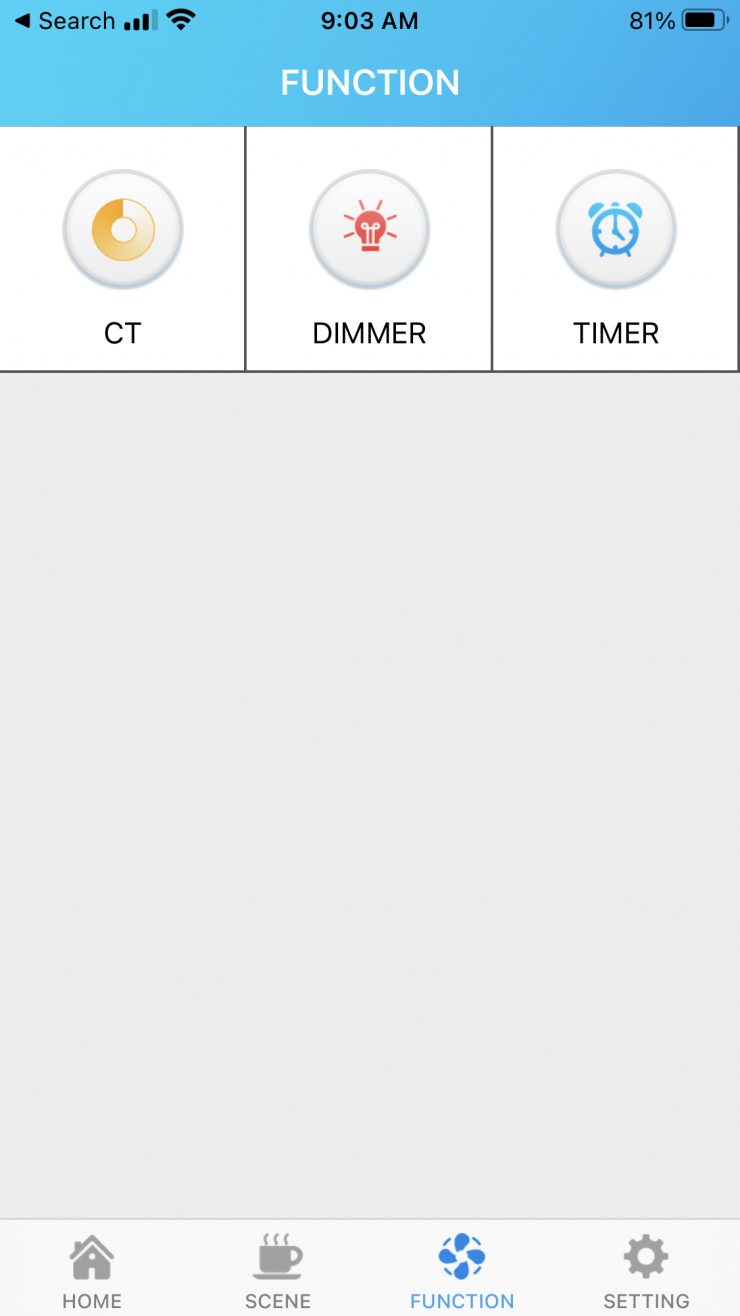
There is a range of parameters that you can adjust using the app.
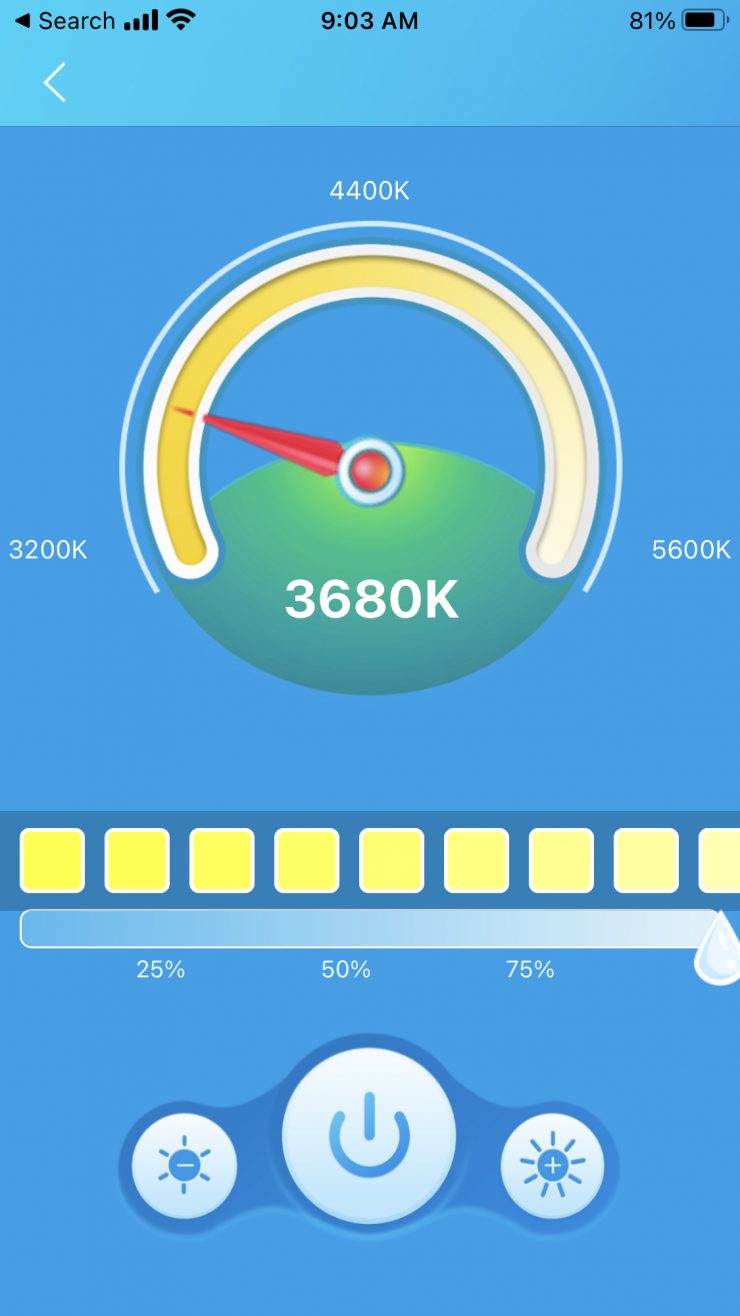
If you select CT you can adjust the Kelvin color temperature and the intensity level of the light. You can also turn the light on/off/
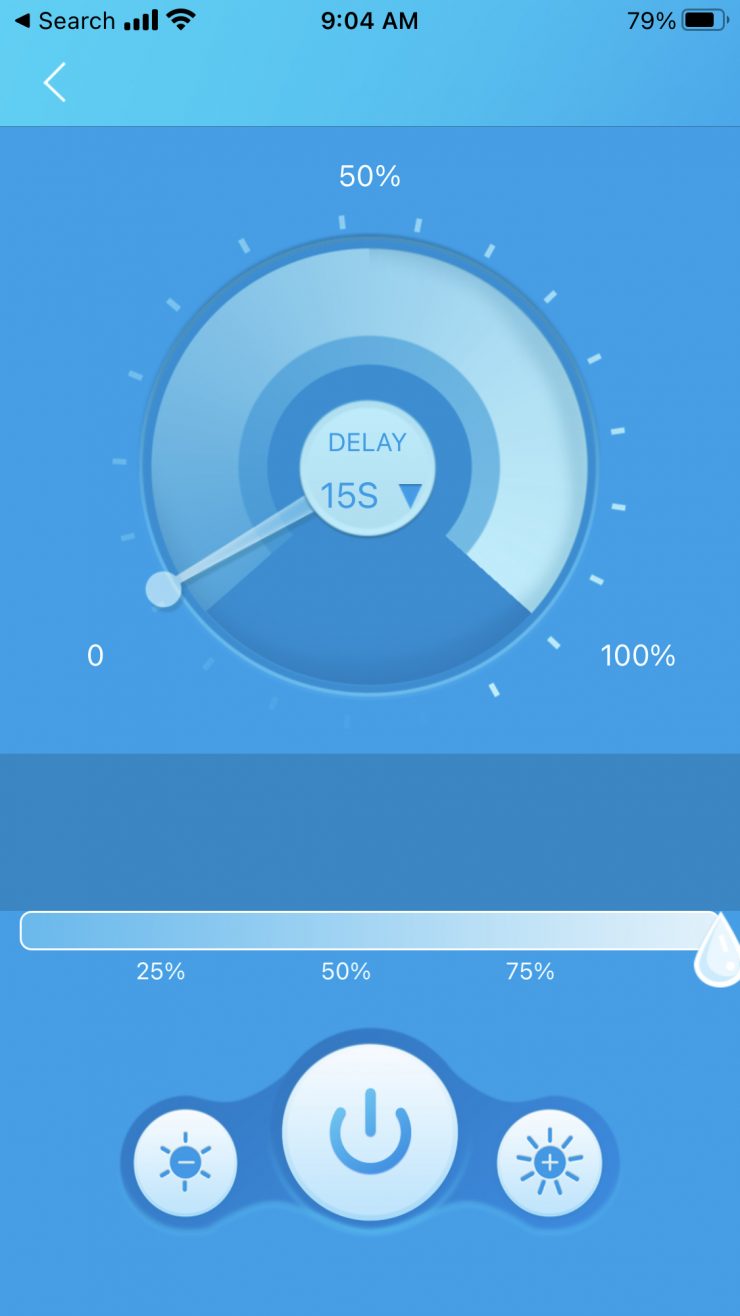
There is also a Delay mode you can go into when using the app. I couldn’t understand how this actually worked and no matter what I tried it didn’t seem to do anything.
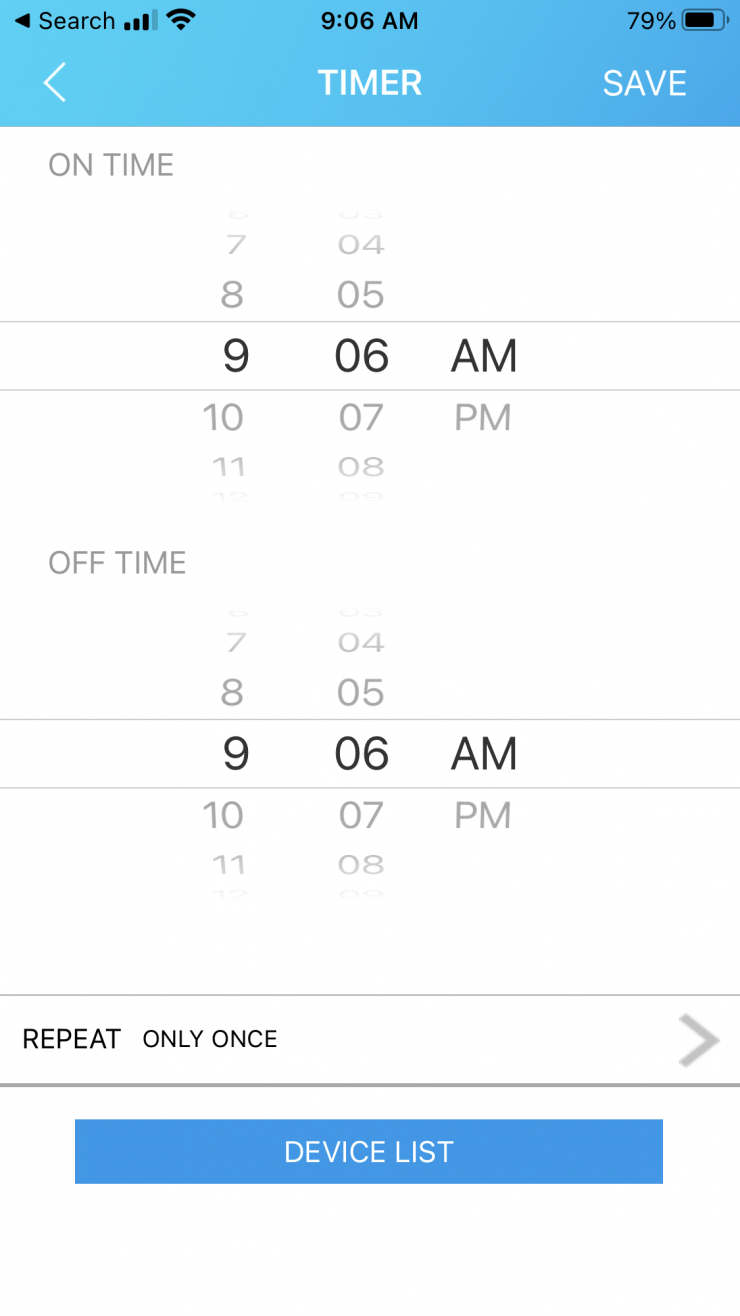
There is also a Timer mode where you choose a specific time for the light to come on or turn off. Again, I tried this out but nothing seemed to work.
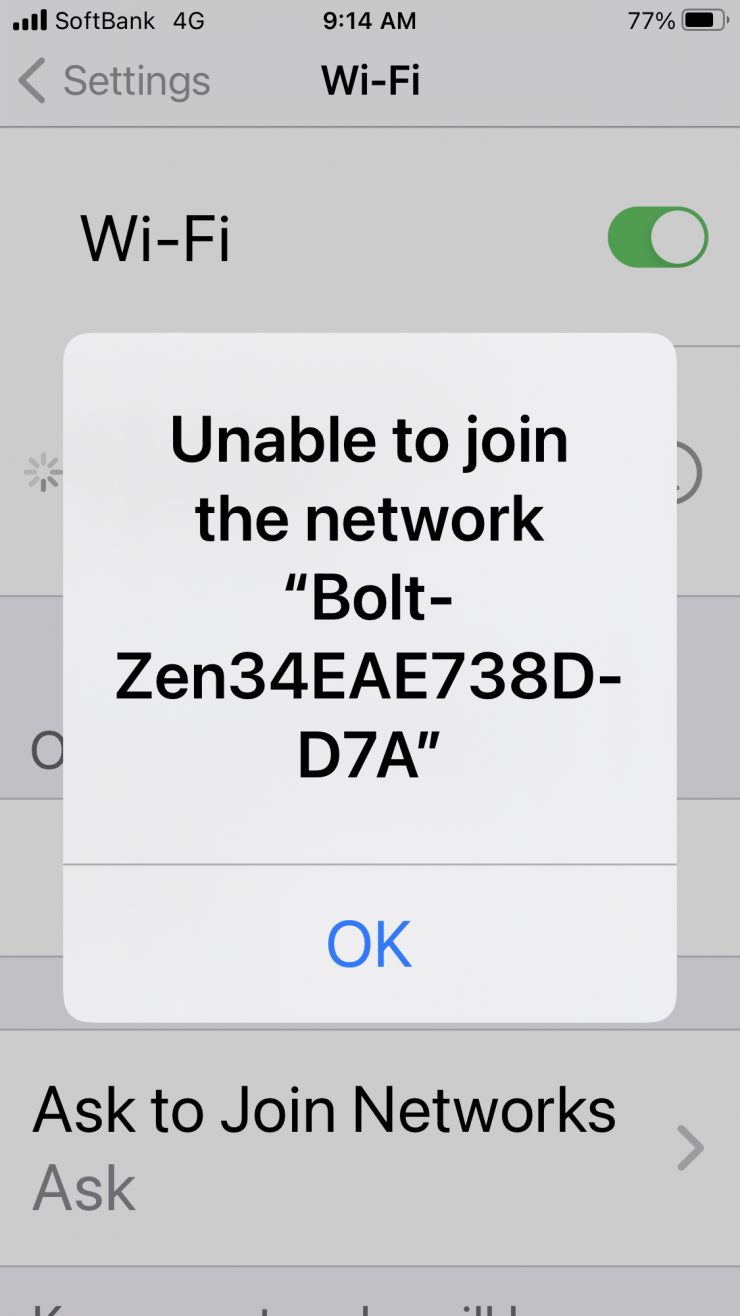
The other big issue I had with the App is that when I turned the light off and turned it back on again the Wi-Fi signal was gone again. I had to go through the whole process from scratch to get it to work again. If you were using multiple Boltzen lights and you turned them all off you have to go back and individually set up all of them again to use the App. Lighting control shouldn’t be overly complicated, but the Boltzen App is not easy to use. It is far quicker to just make manual adjustments on the fixtures instead of trying to use the App. CAME-TV told me that a brand new App will be coming out in November.
Remote Controller
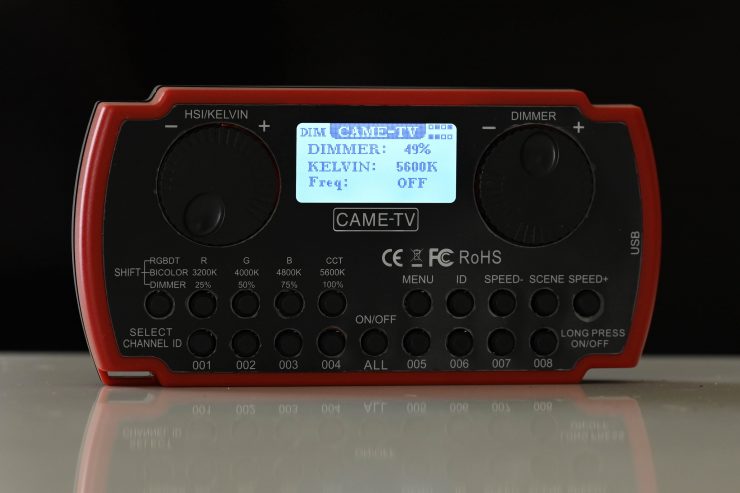
The remote controller you get in the lighting kit is the same remote controller CAME-TV has been using for years. It is unnecessarily complicated and not intuitive to use. I would steer clear of using it because you will get very frustrated just trying to work out how to set it up and operate it.
In case you want to give it a go. Above is an instructional video.
FX

The FX model lets you recreate 6 lighting effects that can be handy for certain scenarios. The effects are:
- Bonfire
- Candle Light
- Lightning
- 5600K Breath
- 3200K Breath
- 3200K-5600K
You can adjust the intensity and the speed of the effects on the light fixture.
How do they stay cool?
The lights don’t feature any in-built fan, and instead, they are passively cooled. They don’t get overly hot even after being left on for long periods of time.
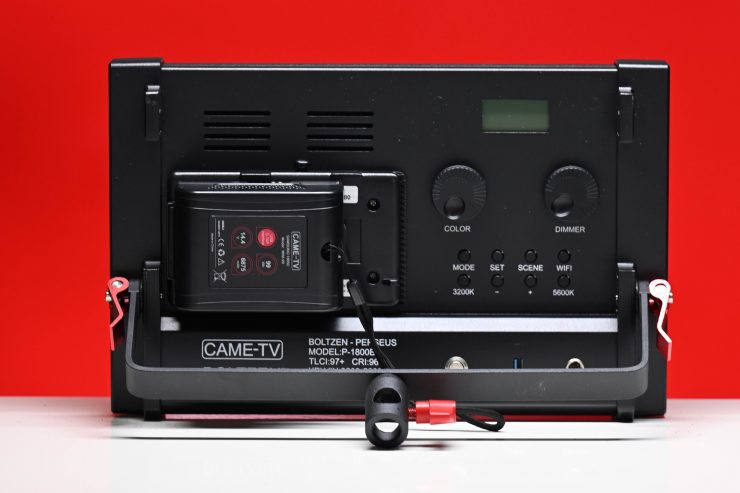
Not having a fan means the lights run completely silent which is nice. If you are going to use them as interview lights you will need to have them reasonably close to your talent.
Photometrics
So now let’s get to the photometric results. I always test lights in this way so that I get a reference to how they compare to other fixtures. Results only tell part of the story and should never be used alone to judge a light. I have found from extensive testing over the years that certain lights that have good photometric results don’t always look good, and lights that have worse photometric scores can sometimes look better than their results indicate.
Different lights can also look different depending on what camera you happen to be using.
It is very important that you don’t judge a light based on one set of tests. You need to look at all of the photometric data to be able to evaluate a light correctly.
Output & Color Temperature Accuracy
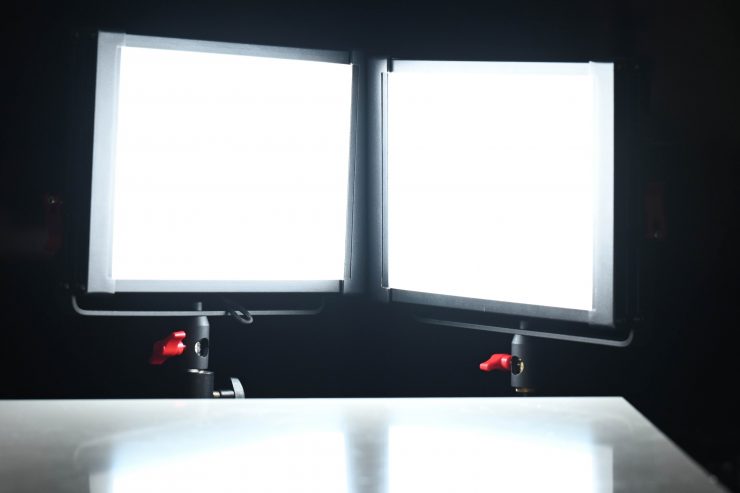
I tested the Boltzen Perseus Bi-Color 55W SMD Soft Travel Lights at a variety of Kelvin color temperatures with a Sekonic C-800 Spectrometer to find out how much output the light had and how accurate the Kelvin color temperature reproduction was. All readings are taken at a distance of 1m (3.28ft) in a controlled environment.
5600K
5600K (mains power)
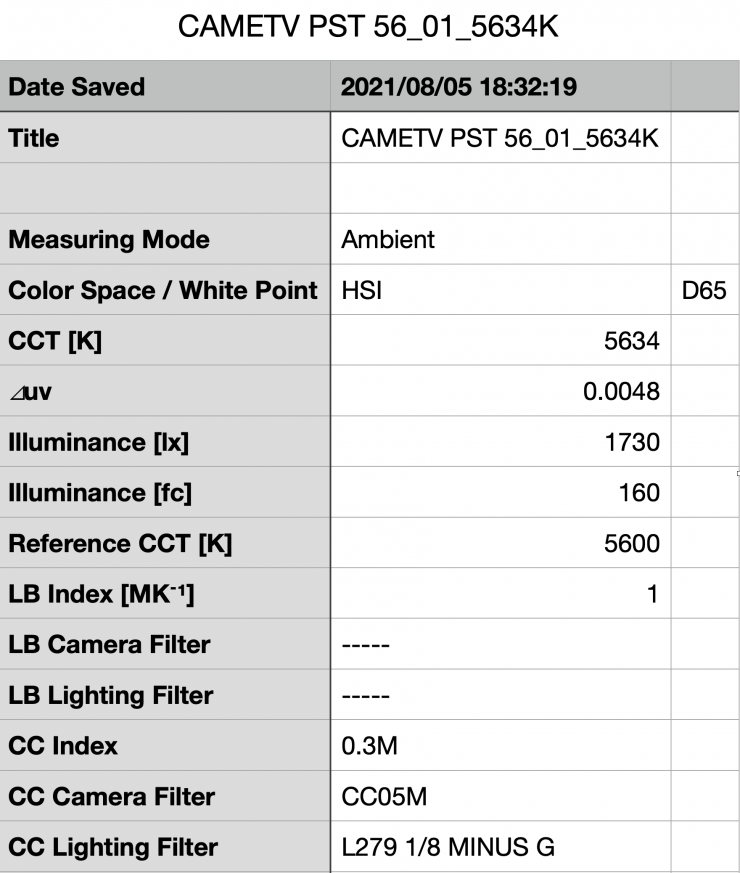
Above you can see the CAME-TV recorded an output of 1730 lx (160 fc) when set at 5600K. This is not a ton of output, however, it is still pretty decent for a light with a wide beam spread that only draws 55W.
As a comparison, the PILOTCINE AtomCUBE RX50P RGBWW which I previously reviewed on the site puts out 1510lx @1m when used at 5600K. That light draws 60W.
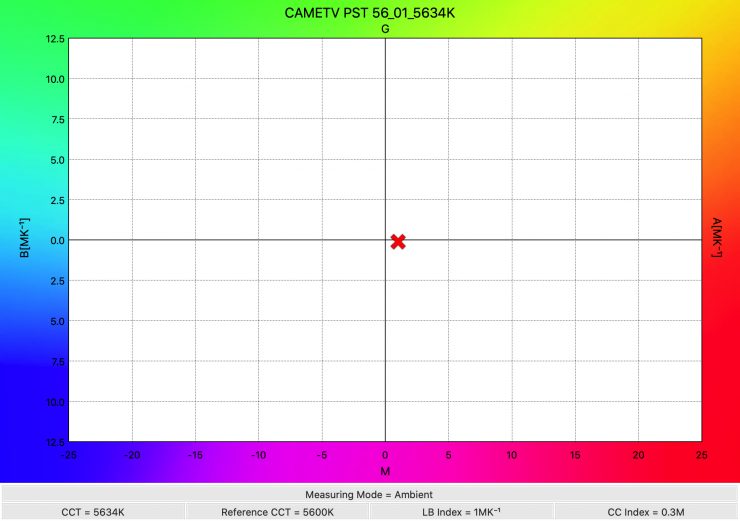
The light recorded a Kelvin color temperature reading of 5634K which was very good.
5600K (battery power)
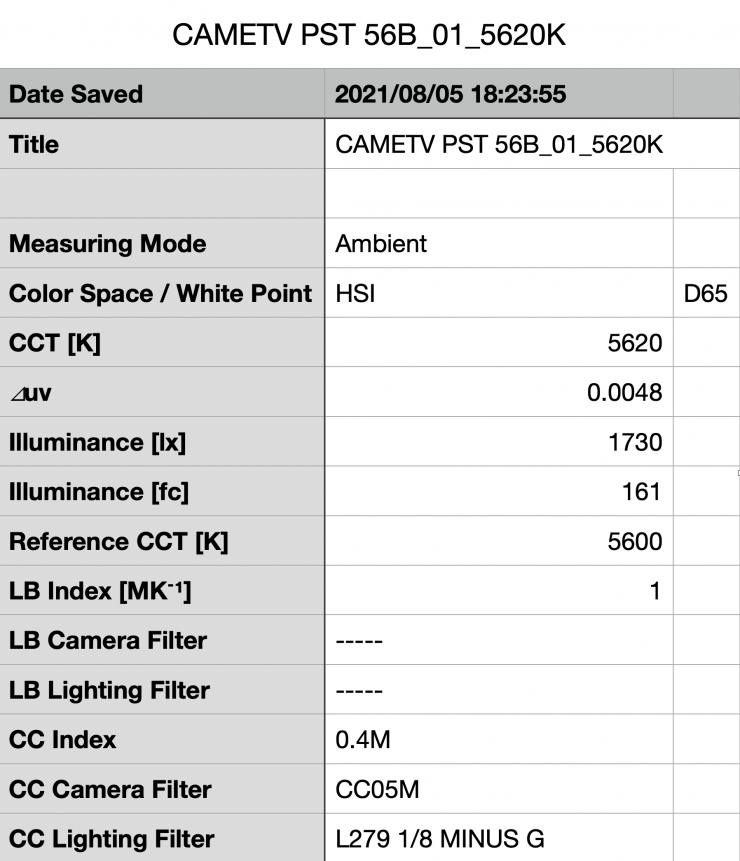
Above you can see the light’s output when it was set at 5600K and run via battery power was 1730 lx (161 fc). This was identical to the output when run from mains power. This shows me that the light is still able to operate at full output when been run via a battery.
3200K
3200K (mains power)
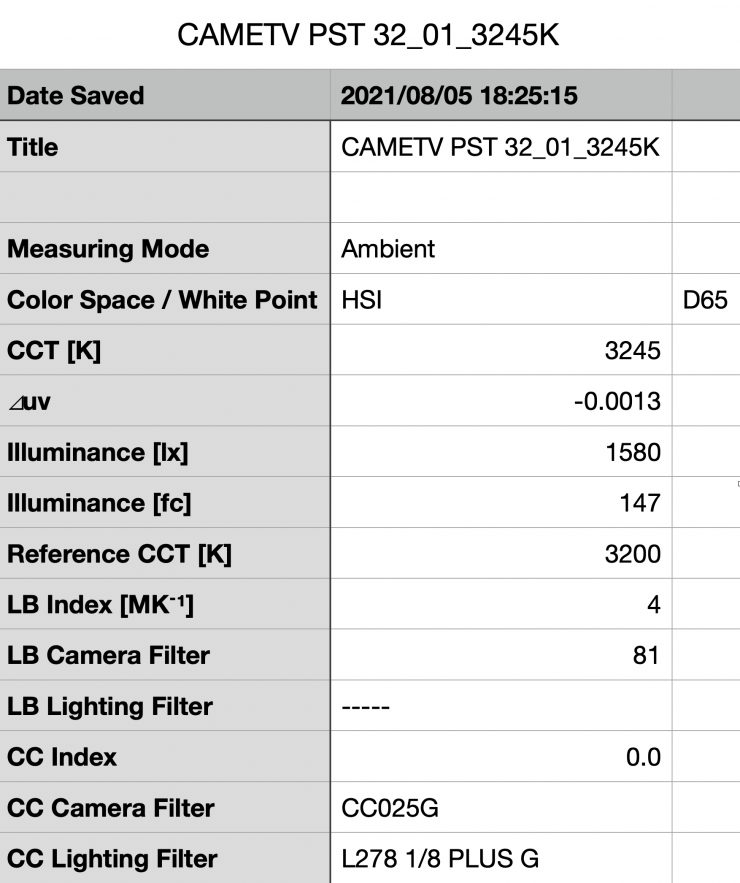
Above you can see the light’s output when it was set at 3200K was 1580 lx (147 fc), this was 9.49% less than what it produced at 5600K.
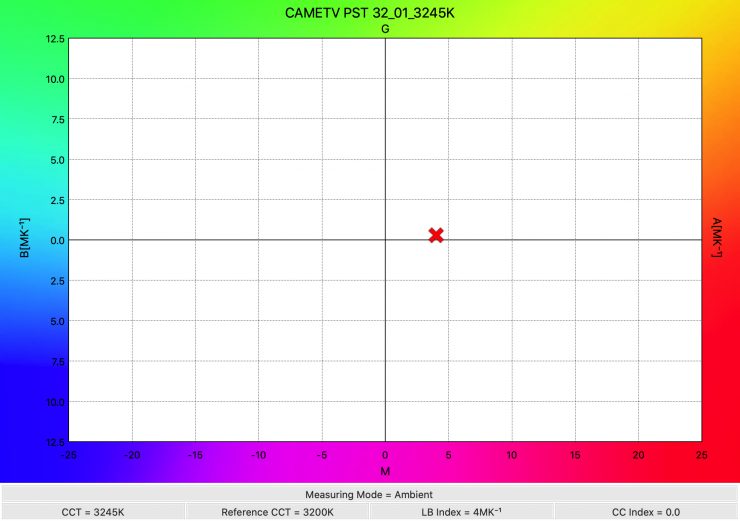
As far as Kelvin color temperature accuracy goes, it recorded a pretty accurate reading of 3245K. This tells me that the light is very consistent when it comes to Kelin color temperature accuracy at both 3200K and 5600K.
How does it perform at various Kelvin color temperatures?
Summary of results
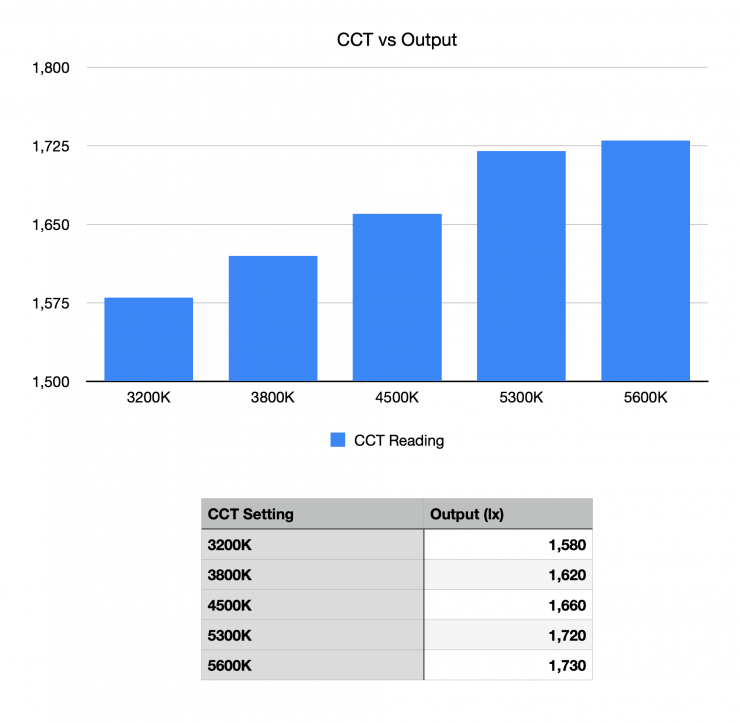
These results show me that the light’s output does vary over its Kelvin color temperature range, but not by much. It has the most output when used at 5600K and the least amount of output when used at 3200K. The output across the 3200K to 5600K range only varies by 9.49%.
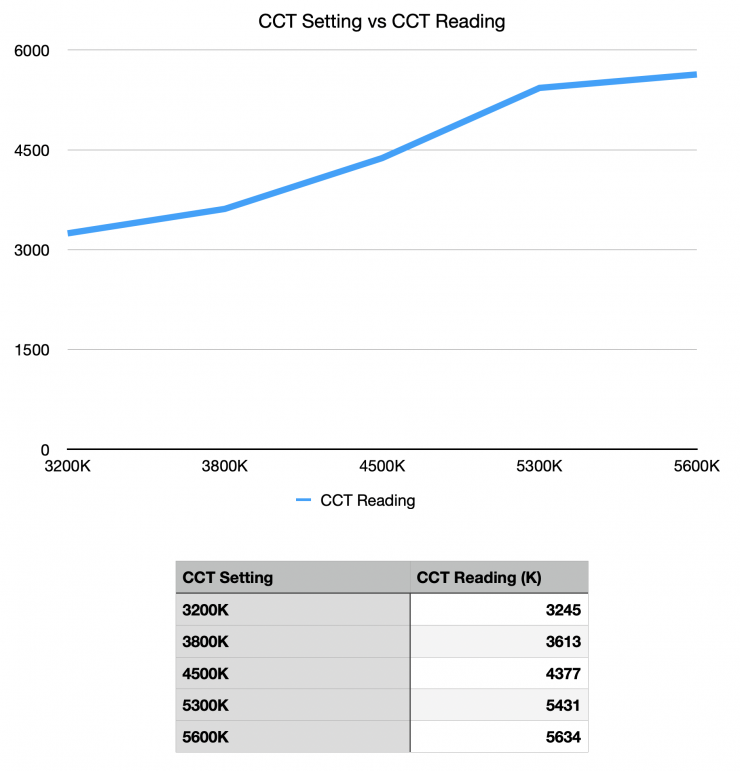
The results also show me that the light is pretty accurate when it comes to Kelvin color temperature reproduction at 3200K and 5600K. If you move off 3200K or 5600K then the light’s Kelvin color temperature accuracy is not as good.
Kelvin color consistency when dimming the light
Now, what you should always do when testing lights is to see if the Kelvin color temperature remains consistent when dimming the light. Just because you set a light at say 5600K, that doesn’t mean that the Kelvin color temperature will remain stable as you start dimming the fixture down.
I decided to do a series of tests at 100%/75%/50%/25%/10% to see if the Kelvin color temperature being recorded changed. This was done at a distance of 1m using a Sekonic C-800.
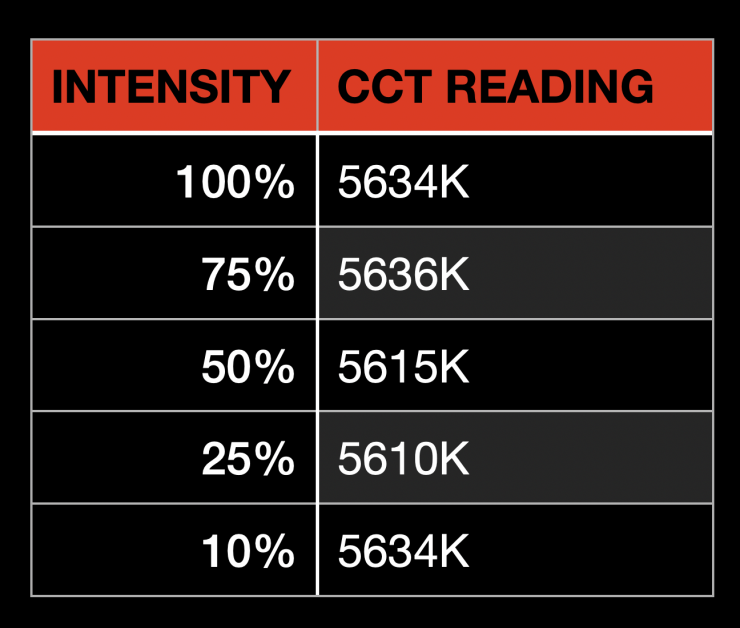
The Boltzen Perseus Bi-Color 55W SMD Soft Travel Lights are able to maintain excellent Kelvin color consistency as you start dimming the fixture. My testing showed that the Kelvin color temperature only varied by 24K. These are outstanding results and it shows me that you can dim this fixture down without having to worry about any noticeable changes in Kelvin color temperature.
How linear is the output?
With lights, it is important to check how linear the dimming curve is. So let’s check out how the CAME-TV performs.
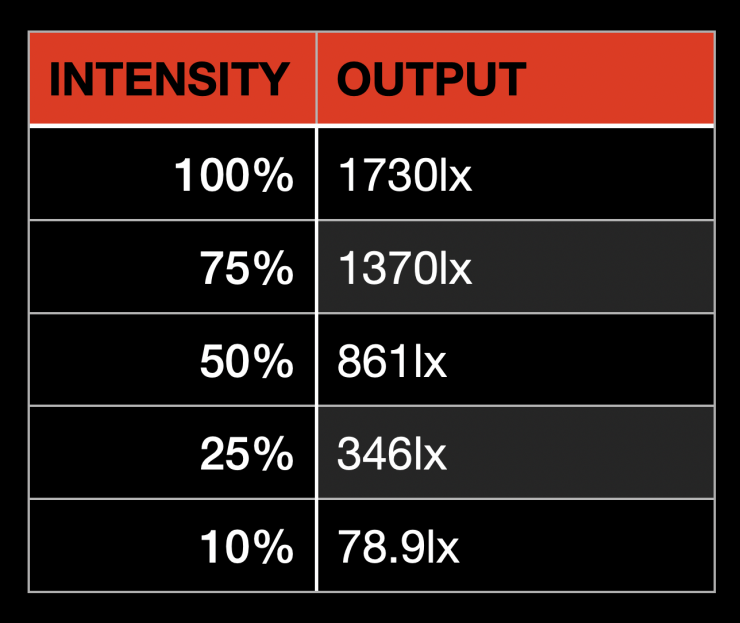
The fixture produces 50.2% less output when used at 50%. At 25% output, it has 80% less output. This tells me that the light’s dimming curve is pretty linear.
Color Rendering
5600K
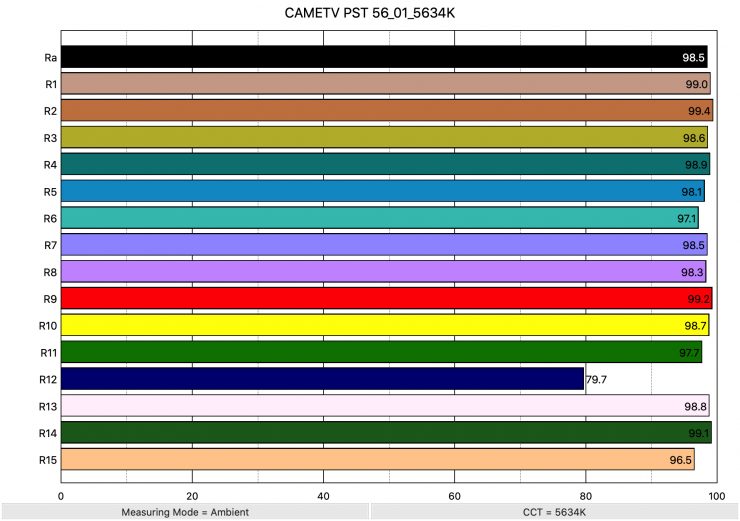
So now that we have seen how much output the Boltzen Perseus Bi-Color 55W SMD Soft Travel Lights produce, how do they perform when it comes to replicating accurate colors. Above you can see that when the light was set at 5600K it recorded an average CRI (R1-R8) of 98.5 and an extended CRI (R1-R15) of 97.17. For replicating accurate skin tones it recorded for R9 99.2 (red), 98.8 for R13 (closest to caucasian skin tones), and 96.5 for R15 (closest to Asian skin tones). Only R12 (blue) was under 96. These are excellent results and some of the best I have seen from an LED light.
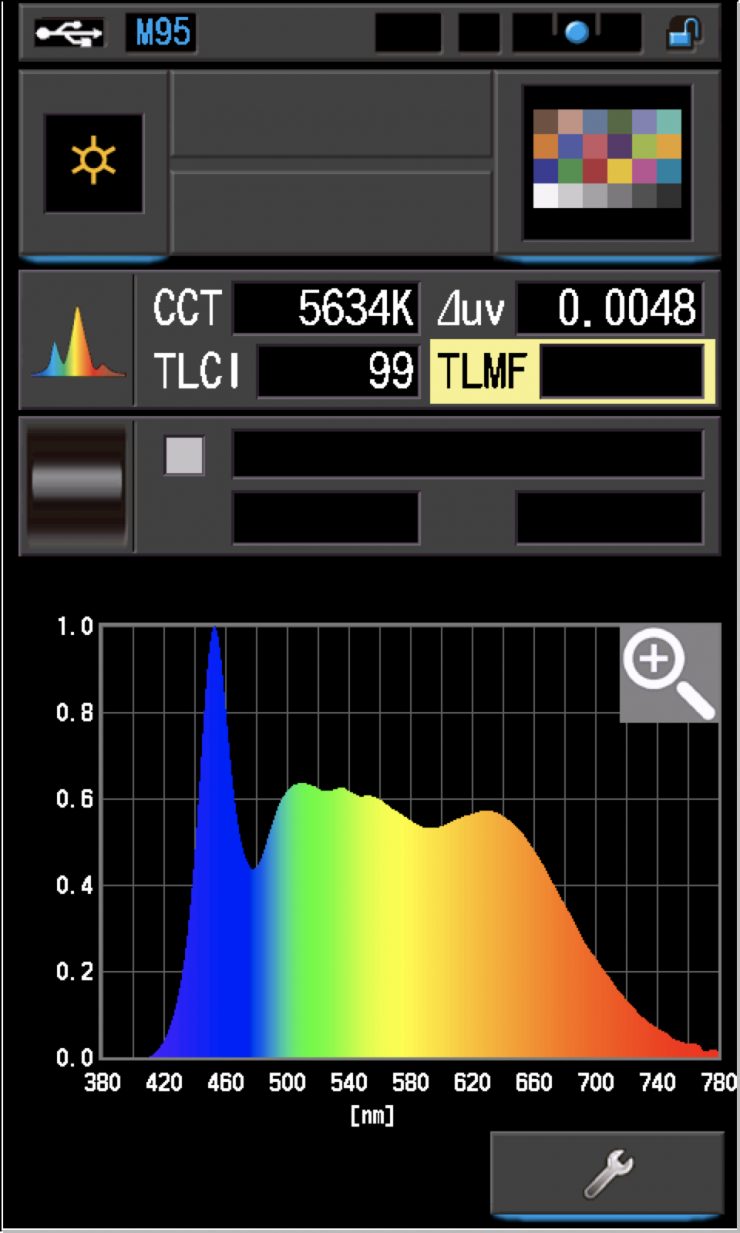
The light, when set at 5600K, recorded a TLCI score of 99.
3200K
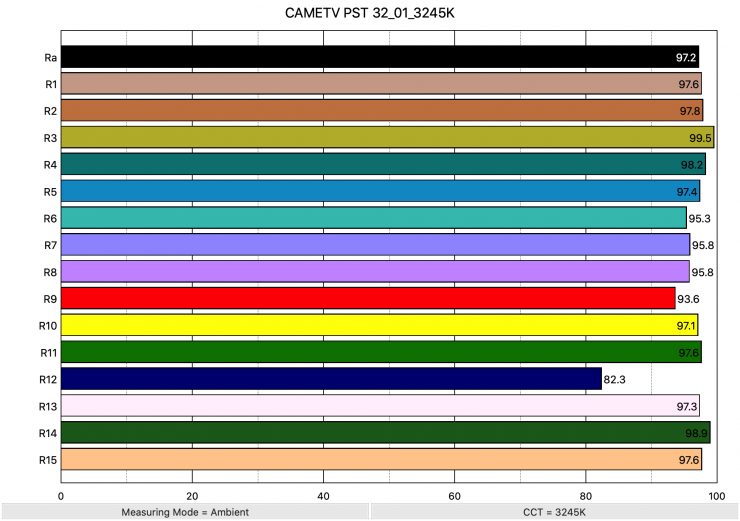
Above you can see the scores for when the light was used at 3200K. It recorded an average CRI (R1-R8) of 97.2 and an extended CRI (R1-R15) of 96.12. For replicating accurate skin tones it recorded 93.6 for R9 (red), 97.3 for R13 (closest to caucasian skin tones), and 97.6 for R15 (closest to Asian skin tones).
These results weren’t quite as good as when the light is used at 5600K, but they are still excellent results.
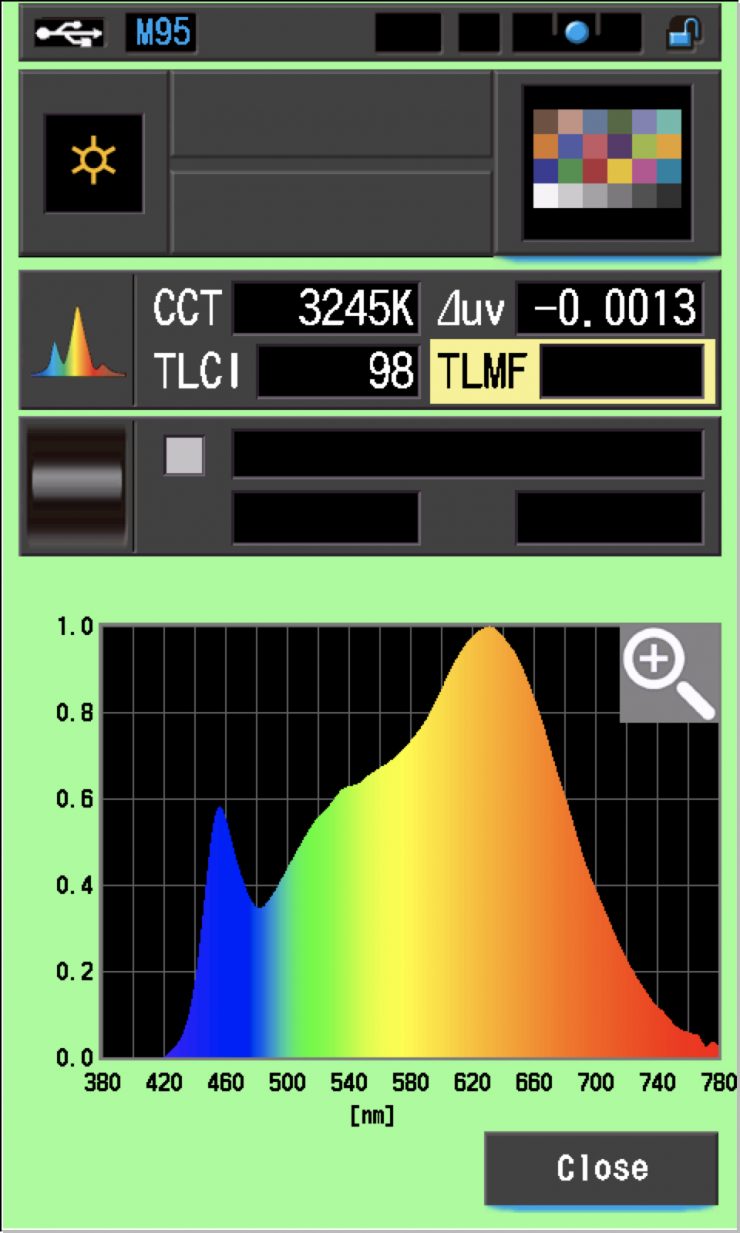
The light, when set at 3200K, recorded a TLCI score of 98.
CC Index & ⊿uv
The CC Index displays the CC correction value and whether any magenta or green need to be added or subtracted. 1 CC corresponds to 035 Kodak CC values or 1/8 Rosco filter values. Any reading less than +1.00 or -1.00 and you’re probably not going to need to make any kind of adjustment. The ⊿uv is the value to show how much this light is away from being an ideal light source (black body radiation = incandescent lamp). As with the CC Index you want this number to theoretically be zero. Kelvin is not a linear value, so we need to convert from Kelvin to MK-1 to compare the values of color temperature. To calculate from Kelvin to Mired is MK-1= 1*1000000/Kelvin. While this may sound confusing, it is the only way of measuring if the Kelvin shift is significant enough to warrant having to use a filter for correction. Below are the results for the Boltzen Perseus Bi-Color 55W SMD Soft Travel Lights:
Kelvin Vs MK-1
| Kelvin | Difference in K | MK-1 | Difference in MK-1 | |
| SET VALUE | 3200K | 0 | 312.5 | 0 |
| ACTUAL READING | 3245K | 45 | 308.16 | -4.34 MK-1 |
| SET VALUE | 3800K | 0 | 263.15 | 0 |
| ACTUAL READING | 3613K | 187 | 276.77 | -13.62 MK-1 |
| SET VALUE | 4500K | 0 | 222.22 | 0 |
| ACTUAL READING | 4377K | 123 | 228.46 | 6.24 MK-1 |
| SET VALUE | 5300K | 0 | 188.67 | 0 |
| ACTUAL READING | 5441K | 141 | 183.78 | -4.89 MK-1 |
| SET VALUE | 5600K | 0 | 178.57 | 0 |
| ACTUAL READING | 5634K | 34 | 177.49 | -1.08 MK-1 |
These figures might look confusing, but what it tells me is that the light is very Kelvin color accurate at most temperatures. Only at 3800K was it not that accurate.
Any MK-1 score that is under -9/9 means you wouldn’t have to use any color correction gels. The MK-1 scores for this light were very good. Any score where a light is under -/+ 6 MK-1 is considered to be excellent.
CC INDEX & ⊿uv
| CC INDEX | ⊿uv | |
| 3200K | 0.0 | -0.0013 |
| 3800K | 0.0 | -0.0017 |
| 4500K | 0.0 | -0.0003 |
| 5300K | 0.3M | 0.0036 |
| 5600K | 0.3M | 0.0048 |
The light is very consistent across the board between 3200-5600K and it displays very similar characteristics when it comes to the CC Index. At 4500K the light is fairly close to perfect for replicating a true 4500K source.
TM-30
TM-30 is a relatively new color rendering standard that was developed to deal with the limitations of CRI. TM-30 looks at 99 individual colors. These 99 colors are categorized into seven groups: nature, skin color, textiles, paints, plastics, printed material, and color systems.
TM-30 scores go from 0 – 100. The higher the score, the more accurate a light is at producing colors. Any TM-30 Rf score in the ’90s is considered to be good. What is interesting and something that you need to be very aware of is that two separate light sources with the exact same CRI scores can render colors very differently. A light with a high CRI rating could have a low TM-30 score. Conversely, a light with a good TM-30 score could have a bad CRI score.
Now, there are two measurements associated with TM-30, Rf and Rg.
- Rf (Color Fidelity)
- Rg (Color Gamut)
With Rf value, ideally, you want a score in the 90’s.
With Rg value, a score below 100 indicates that the light source renders colors with less saturation than the reference source. So ideally you want this score to be above 100.
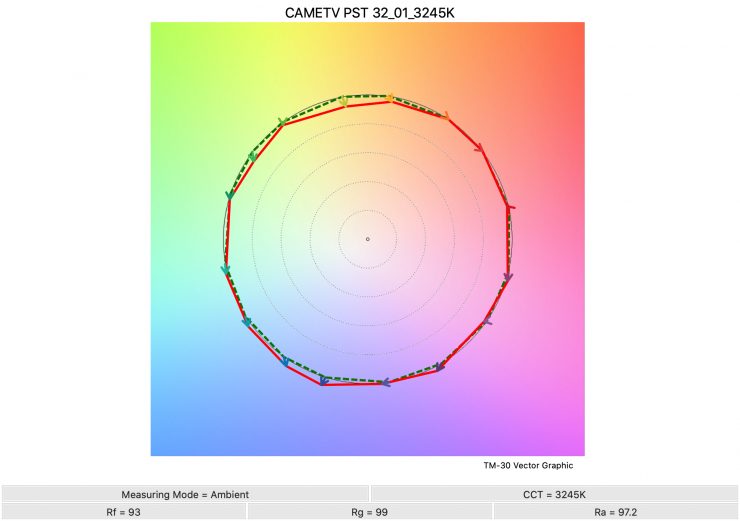

3200K 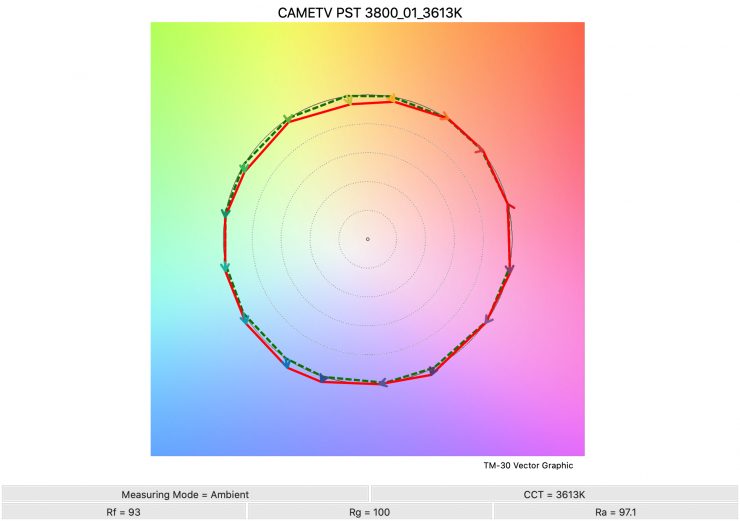
3800K 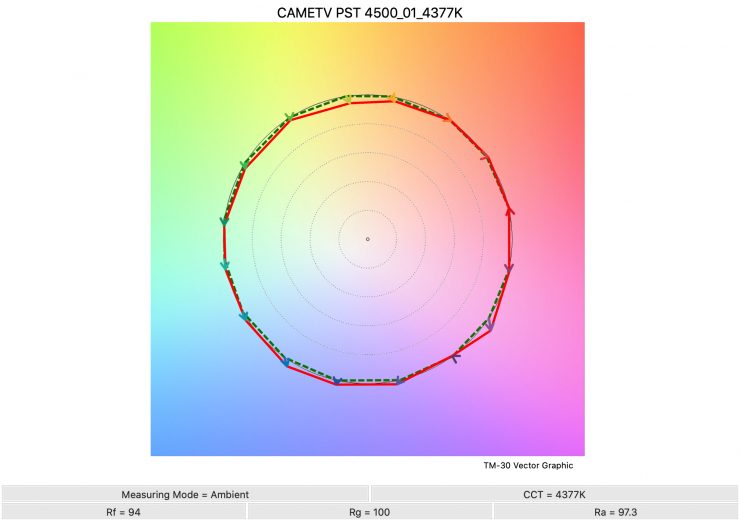
4500K 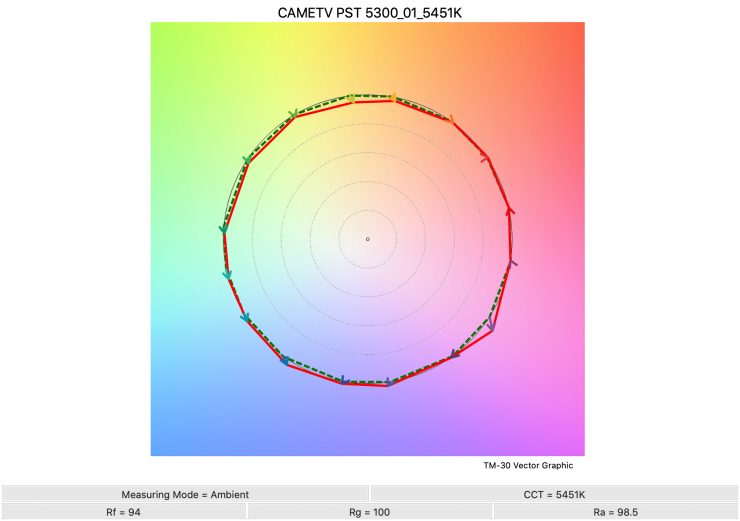
5300K 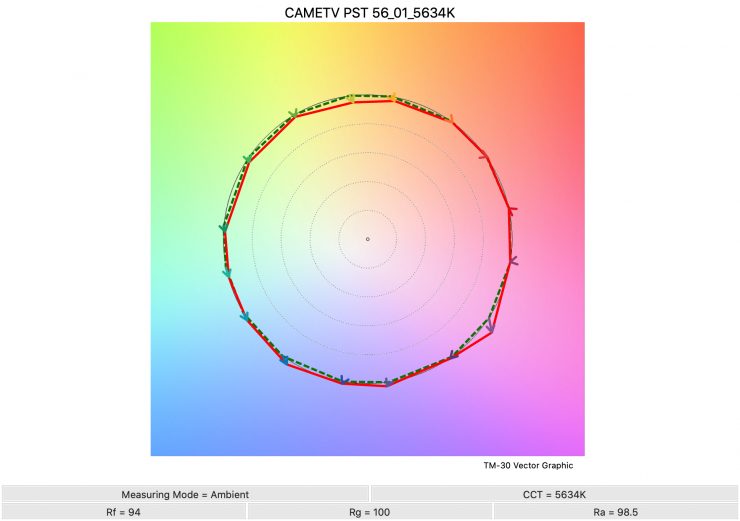
5600K
Above you can see the scores for the Boltzen Perseus Bi-Color 55W SMD Soft Travel Lights at various Kelvin color temperatures.
Here are the results:
| Rf | Rg | |
| 3200K | 93 | 99 |
| 3800K | 93 | 100 |
| 4500K | 94 | 100 |
| 5300K | 94 | 100 |
| 5600K | 94 | 100 |
The Rf and Rg scores are extremely consistent across its Kelvin color temperature range.
SSI
SSI (Spectral Similarity Index) was developed by the Sci-Tech Council of the Academy. SSI gives me the ability to set any light as a standard, or use predefined standards (such as CIE D55), and then give other lights an SSI score based upon how well they will match standards such as CIE D55. This way I can measure spectral response and compare it directly against an ideal light source. This is actually a much better test than recording CRI scores.
3200K
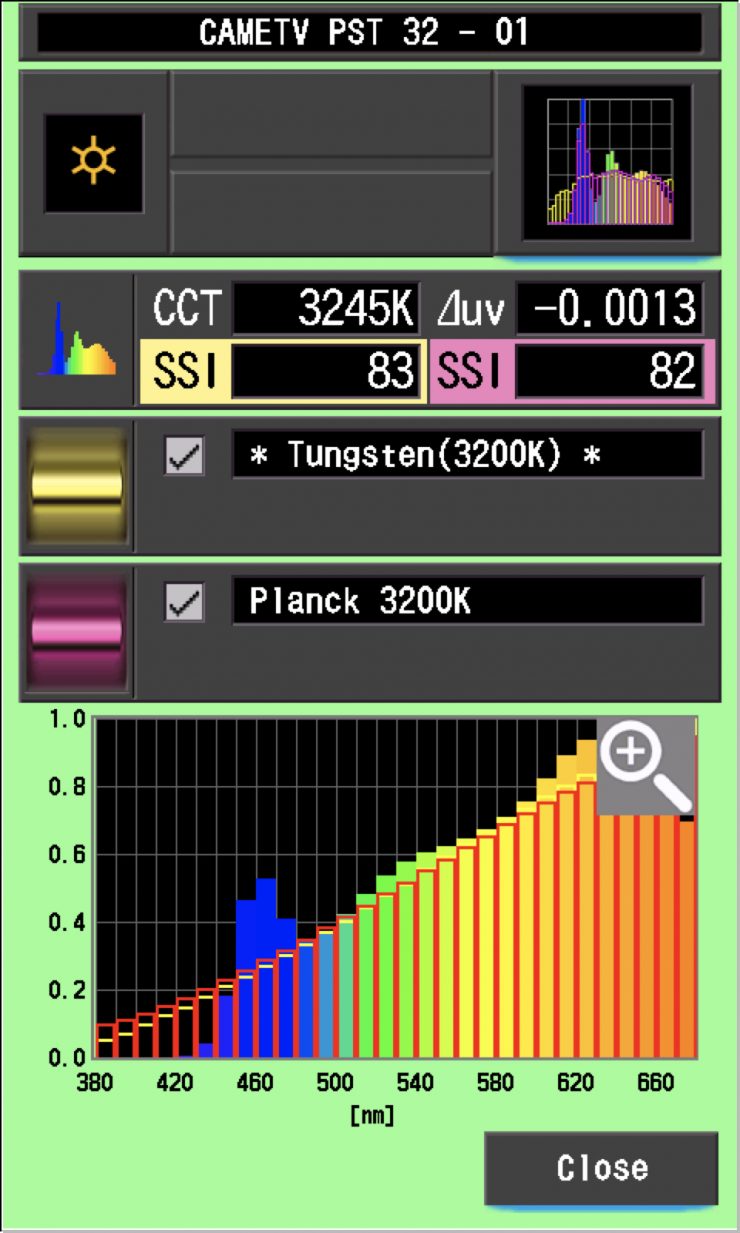
In this graph, the red bars indicate a perfect Planck 3200K source. The gold bars indicate a perfect 3200K Tungsten source. This lets us compare how close to a perfect 3200K lighting source the Boltzen Perseus Bi-Color 55W SMD Soft Travel Lights are. Any SSI score in the high 70’s, low ’80s is very good for a 3200K LED light. As you can see, LED lights have a hard time replicating colors below about 450nm.
5600K
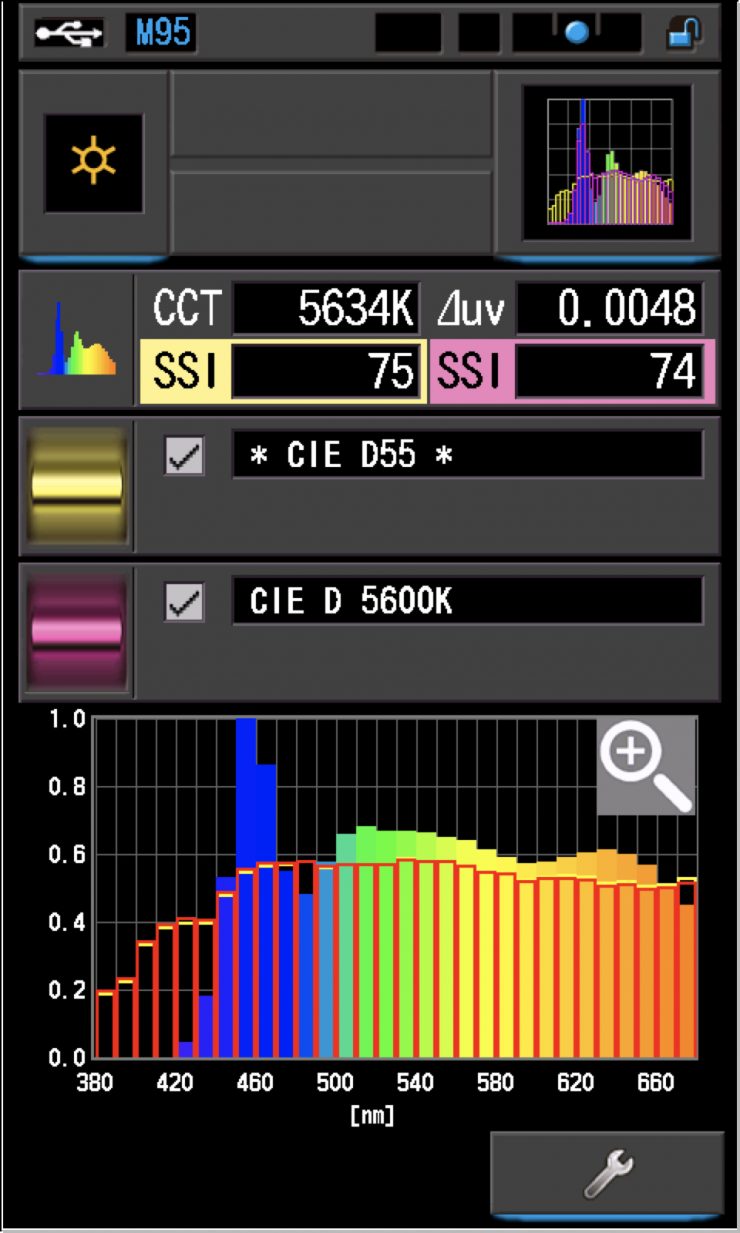
In the graph above the gold bars indicate a perfect CIE D55 source. The red bars indicate a perfect CIE D 5600K source. This lets us compare how close to a perfect 5600K lighting source the Boltzen Perseus Bi-Color 55W SMD Soft Travel Lights are. A score in the low 70’s is typical for a 5600K LED source.
The main reason we want to record SSI scores is so we can see how well they match with other lights. As an example, I wanted to see how well the Godox ML60bi matched the Godox SZ150R and the ARRI Orbiter. Below you can see the results.
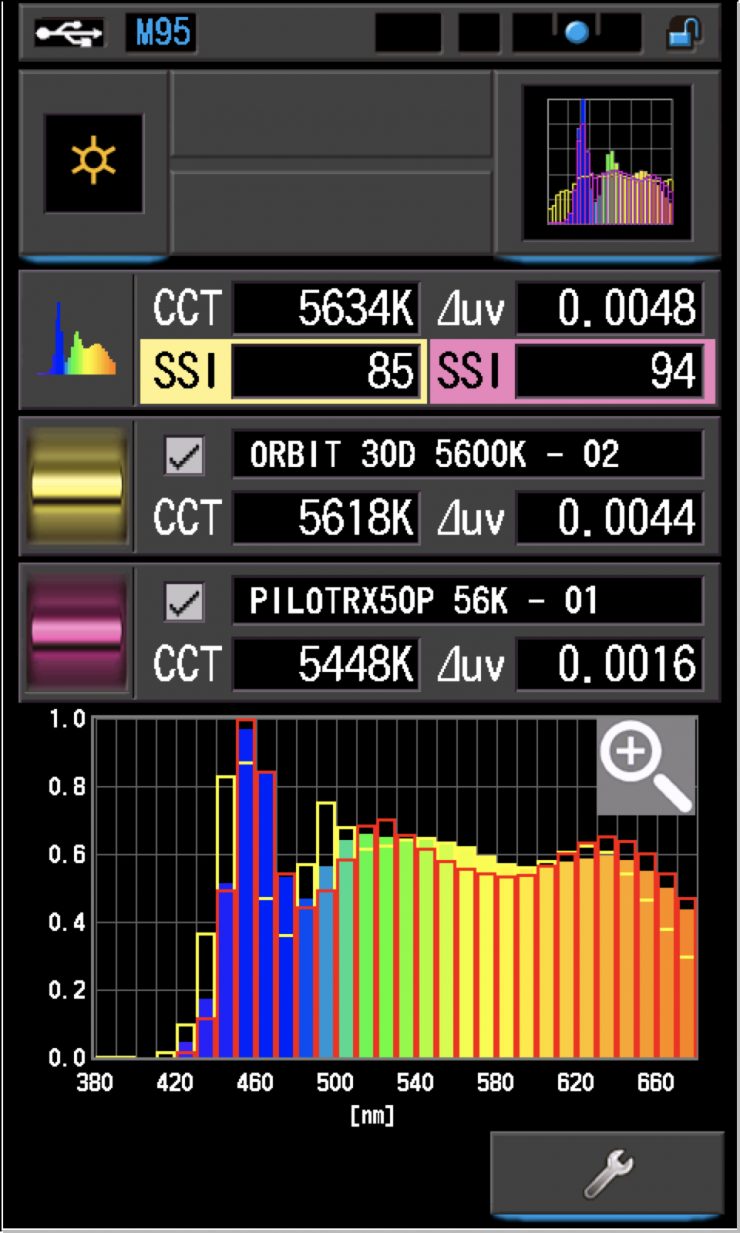
As you can see the CAME-TV matches up pretty well to the Pilotfly RX50P, and it actually does a reasonably good job of matching up with the ARRI Orbiter.
So, what about if we use the light at 3290K. Let’s go ahead and pick two other lights we have previously reviewed to see how well they match. For this example, we will compare the ARRI Orbiter and the Prolycht Orion 300 FS.
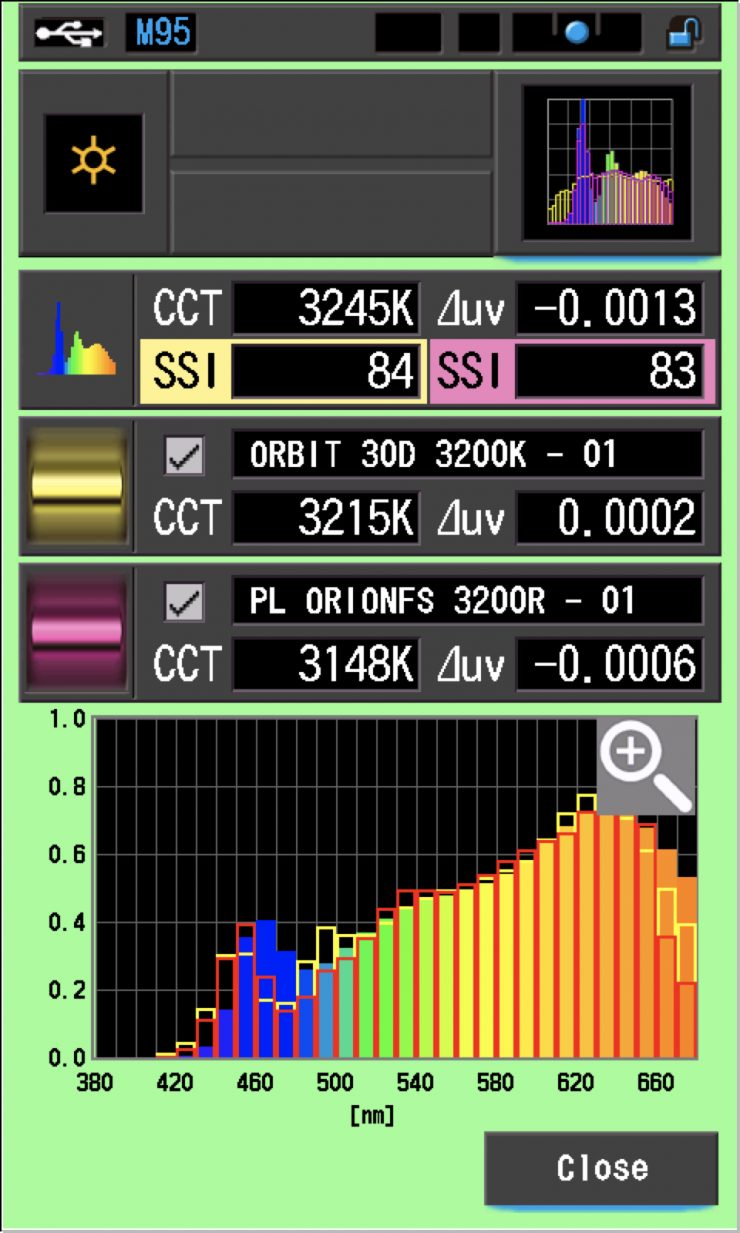
As you can see, the CAME-TV doesn’t exactly match well with the ARRI and the Prolycht, however, a score in the low 80s is still ok.
SSI tests are a great way of telling you what lights you own or use will work well together.
Spectral Distribution
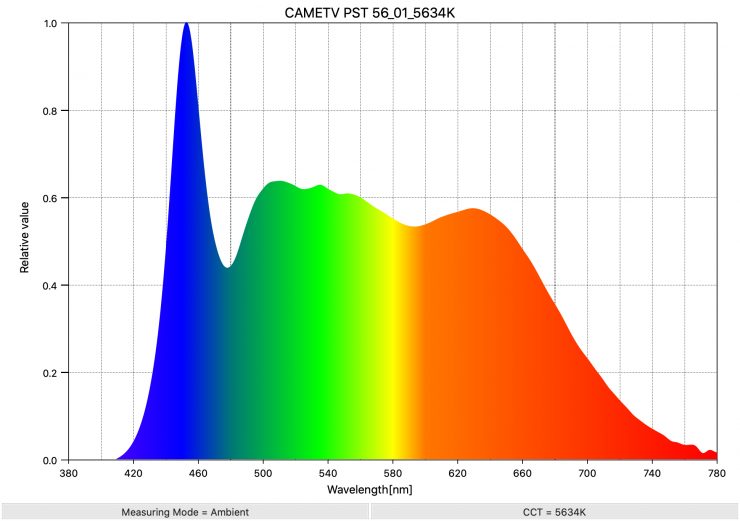
Above you can see the spectral distribution of the Boltzen Perseus Bi-Color 55W SMD Soft Travel Lights when they are set at 5600K. The spectral distribution is reasonably good and there aren’t any big spikes where there shouldn’t be.
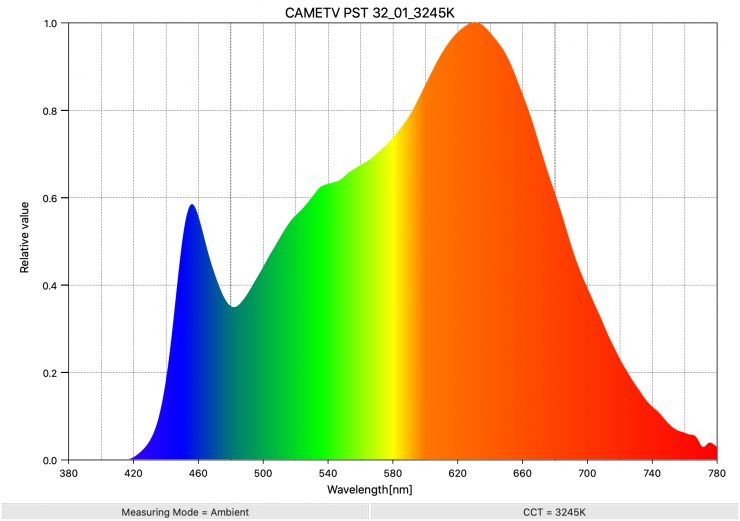
Above you can see the spectral distribution of the CAME-TV when it is set at 3200K. Again, just like at 5600K, the spectral distribution is pretty good.
Real-World Performance & Quality of Light
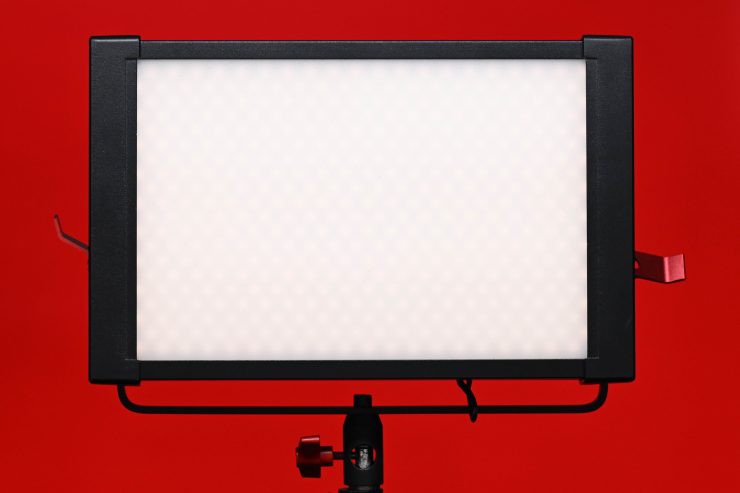
As I always say, photometric scores only tell you part of the story. So let’s find out if the scores from Boltzen Perseus Bi-Color 55W SMD Soft Travel Lights translate into good real-world performance.
The photometric data can only give me scientific data and it is much more important for me to see how the light looks and performs.
Unfortunately, it is very hard at the moment with the Coronavirus for me to showcase the strengths of the light. I live in Japan in an apartment so there isn’t a lot of space to do much testing. I apologize that I can’t do more!
The lights are more than capable of providing a decent solution if you need to light a talking head, add some extra illumination in a room, or for supplementing practical lighting sources.
What you need to be mindful of is that because they are not overly bright, you may find situations where they don’t have enough output to match certain backgrounds you may be filming against.
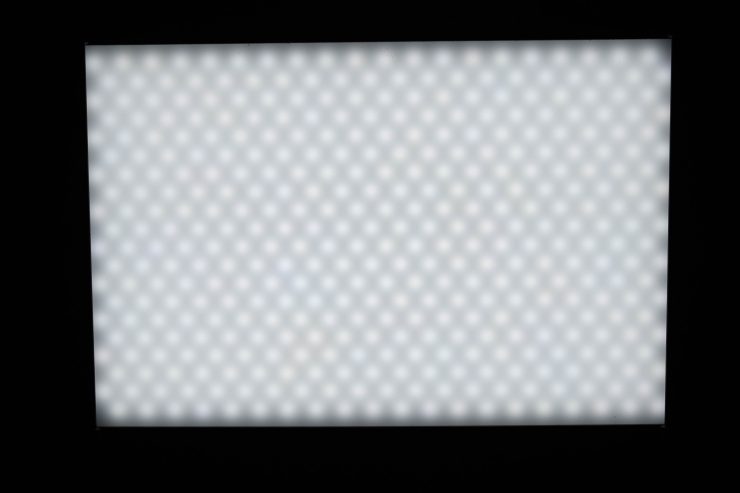
The soft diffusion panel on the front of the lights isn’t that strong so you will also see all of the individual LEDs.
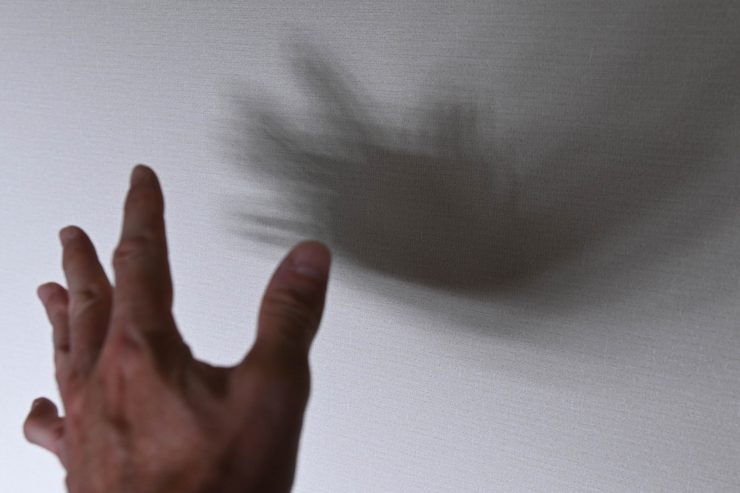
This does also mean you will get cross-hatched shadows if you are too close to a wall, etc.
The biggest complaint I have with the lights beam spread is very wide and this makes controlling spill very difficult.
Again, traveling lighting kits are always going to be a compromise, but I do wish that CAME-TV would make a set of bard doors or at the very least some sort of honeycomb grid that you could just place on the front of the lights.
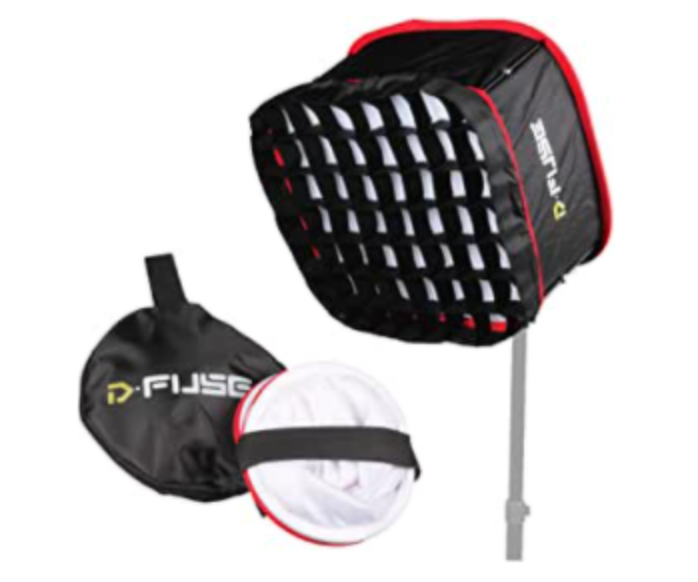
In saying that, it is fairly easy to find affordable collapsable softboxes and grids that you can fit onto the light from B&H, Amazon, etc.
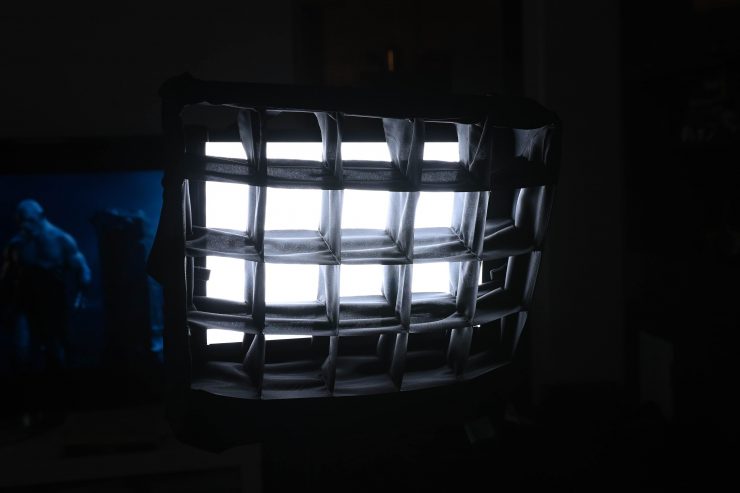
I tried using a DoPchoice SNAPGRID 40° that was meant for a Lupo Superpanel Soft, and even though it is not designed to work with the CAME-TV, I still found it provided good results.
In some ways, having a wider beam spread on a set of travel lights does make more sense because of the added versatility it provides over something with a very tight beam angle. But again, that is certainly open to debate.
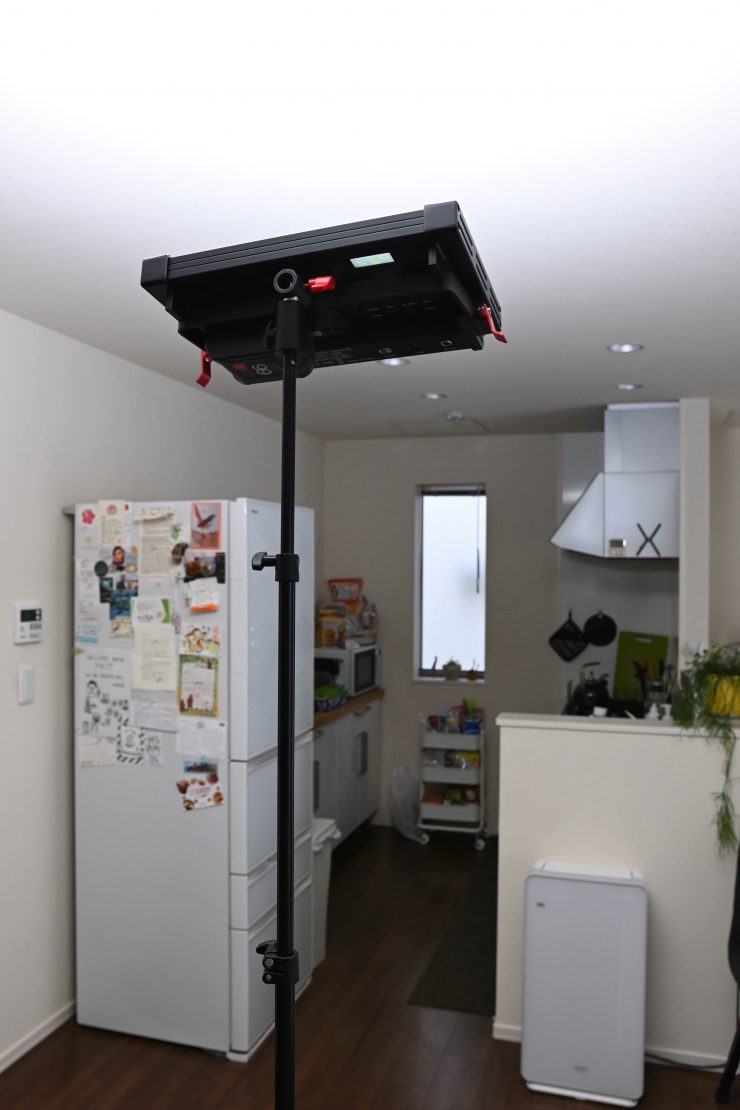

Light on 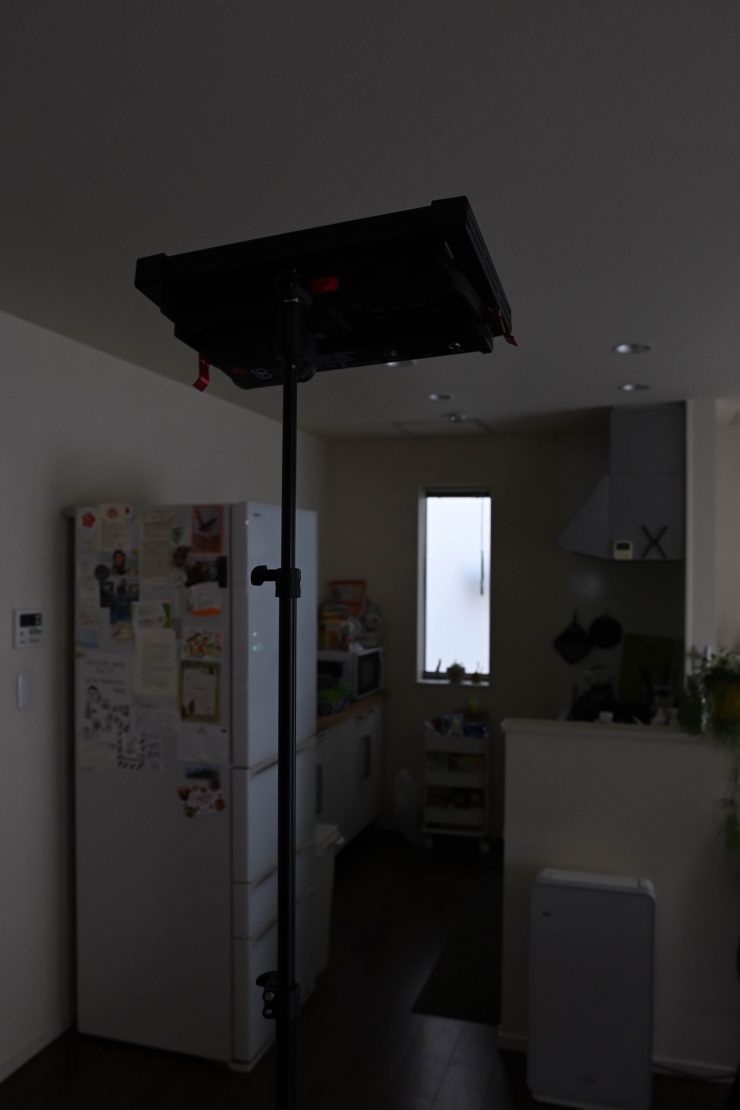
light off
I found that because of their wide beam spread you could punch one or two of the lights directly into a wall or ceiling and it would give you enough illumination to add some extra light into a room. Again, these are small-sized panel lights and they aren’t going to replicate larger lights.
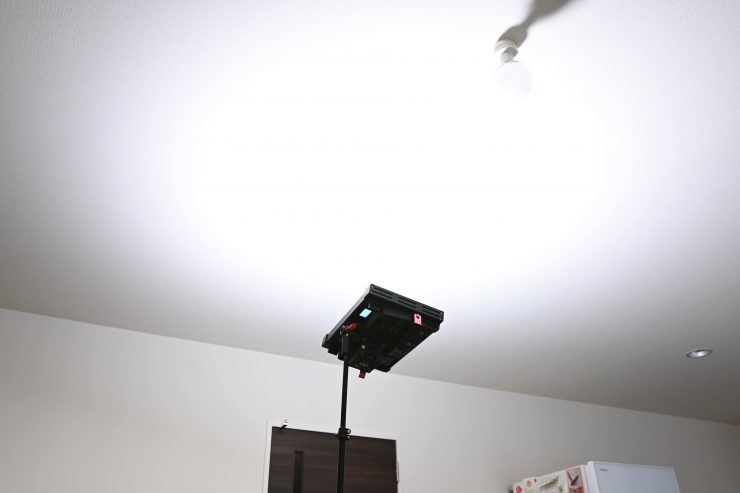
Above you can see how wide the beam spread is if I punch the light into the ceiling.
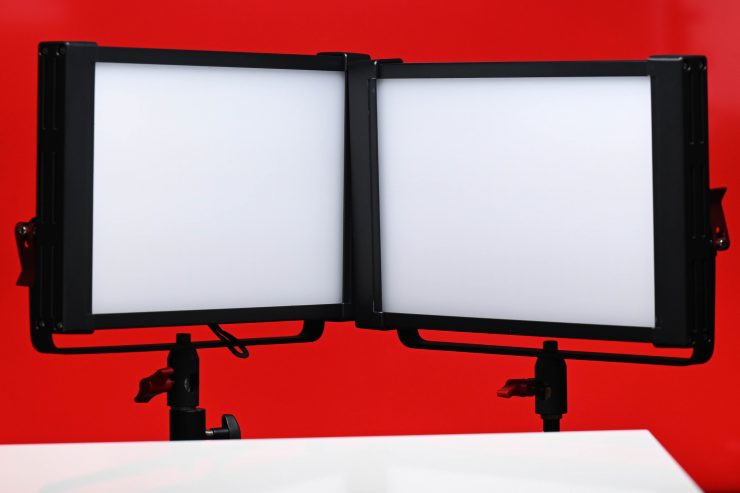
The output isn’t that high, but for a small-sized panel light that can be run off flight-safe batteries, it is still decent enough. It is a pity that CAME-TV didn’t put any mounting points on the lights, because it would have been nice to have been able to stack a few together to create a larger source. In saying that, you could just place two lights next to each other to essentially achieve that result.
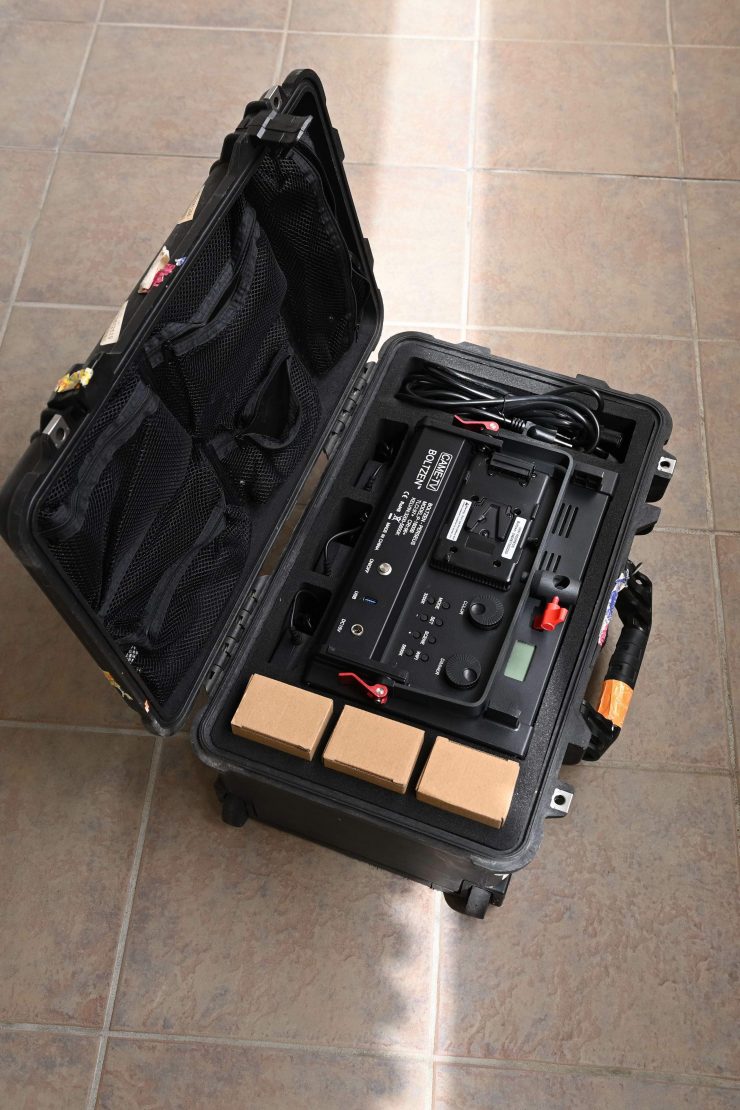
It is really nice how you can just place the whole kit straight inside a Pelican case you already own.
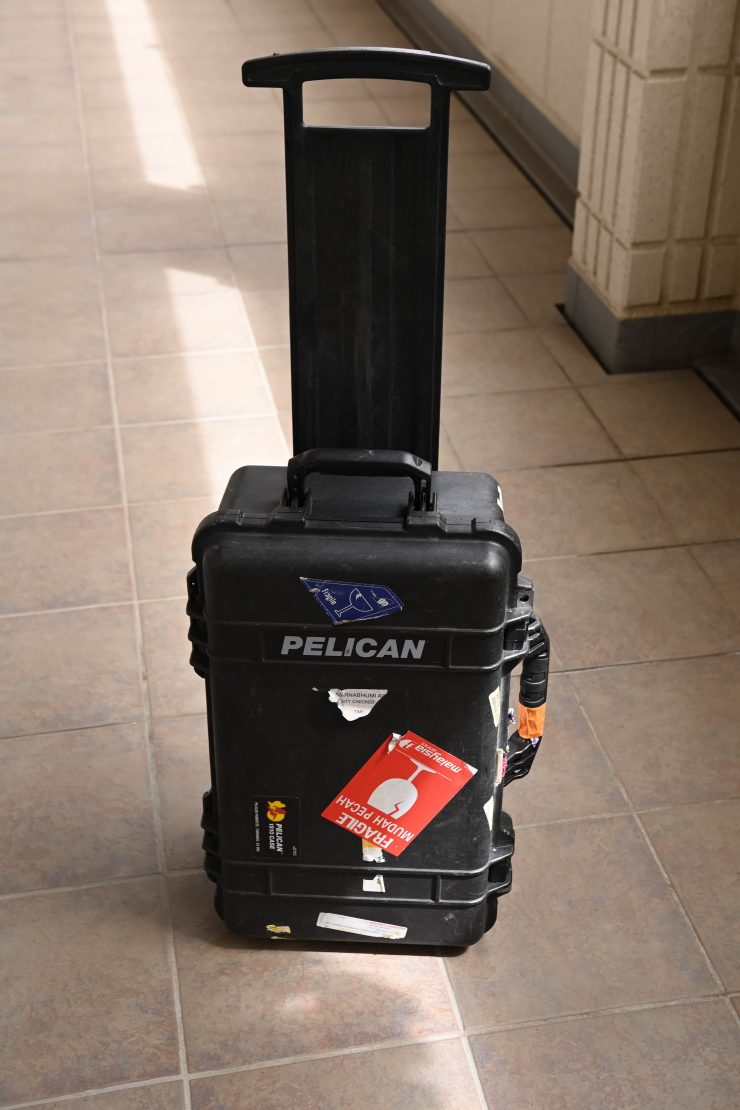
Being able to have a self-contained lighting kit inside a manageable hard case is a great option for traveling shooters.
Price & Availability
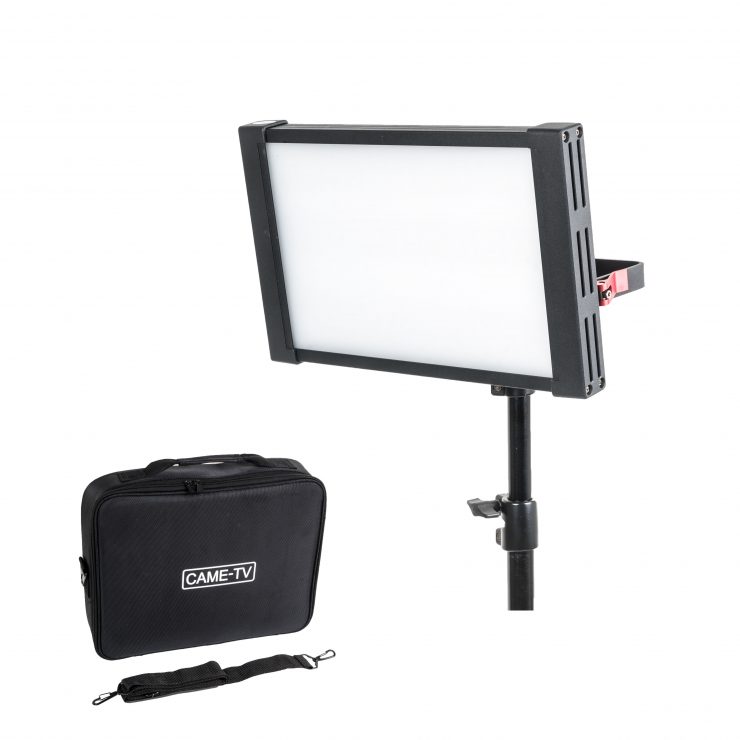
The Perseus Bi-Color 55W Travel Lights are available for the following prices:
- 1x Perseus Bi-Color 55W Travel Light $264 USD
- 2x Perseus Bi-Color 55W Travel Lights with Foam $563 USD
- 3x Perseus Bi-Color 55W Travel Lights with Foam $844 USD
- 2x Perseus Bi-Color 55W Travel Lights with Batteries $777 USD
- 3x Perseus Bi-Color 55W Travel Lights with Batteries $1,164 USD
- Optional Hardcase $125 USD
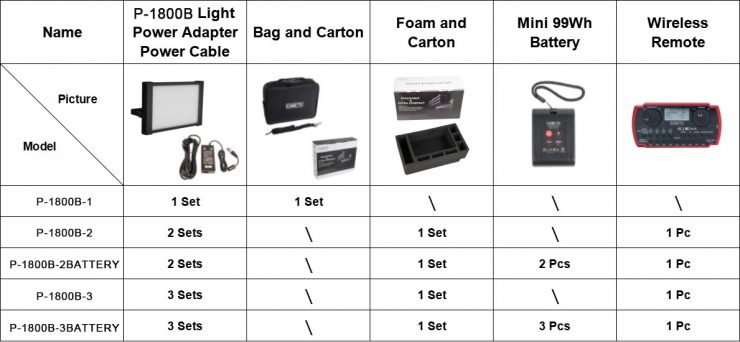
Competition?
There actually aren’t really any other options out there if you are looking for Bi-color 55W panel lights, especially if you are trying to find a comparable travel kit.
There are certainly options if you wanted to go with two larger style panel lights in a larger case, but if you want a three-light kit that can be placed into a compact case, then most of the options tend to not come in panel light form.
Below you can see a couple of other lighting kit solutions that you could possibly use:
| Price | |
| Nanlite Interview Lighting Kit | $1,396.11 USD |
| Digital Juice MiniBurst PRO Daylight 3-Point Lighting System Bundle | $995 USD |
| Rotolight NEO 2 Explorer Kit | $895 USD |
What you clearly need to factor in is that the CAME-TV kit comes with 3x 99Wh V-mount batteries. This is something other lighting kits don’t have.
Accessories
Here lays the biggest issue with this light. The lack of accessories. I am not talking about the included accessories you get, I am talking about light modifiers.
As I previously mentioned, CAME-TV doesn’t sell any barndoors or softboxes, honeycomb grids, etc. This means you really have to DIY solutions or buy a third-party solution which is not necessarily something you want to do when you are buying a self-contained traveling lighting kit.
Again, I don’t want to sound like a broken record, but kits like these are always going to revolve around compromises. You just need to be clearly aware of what those compromises are before purchasing.
Hard Source Travel Kits
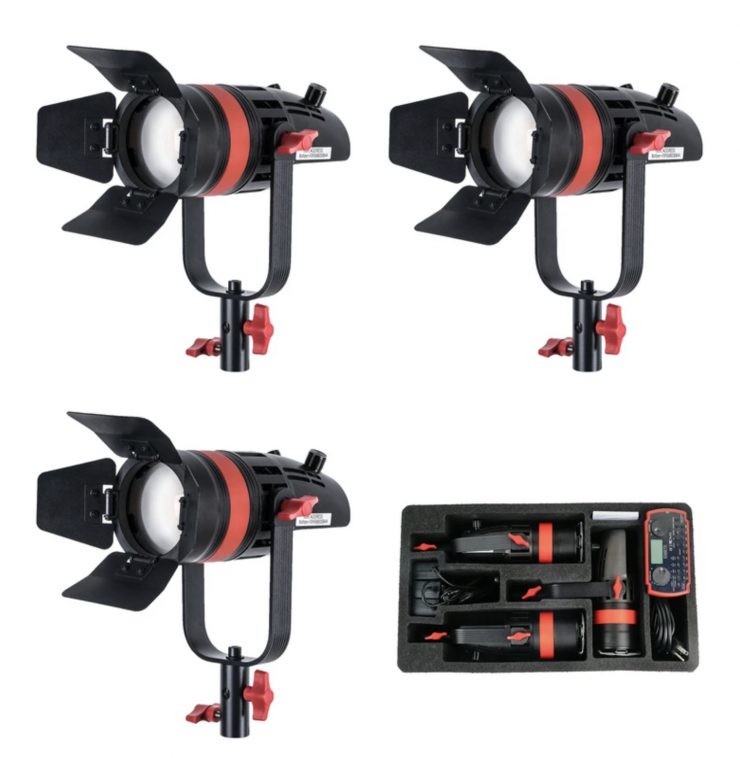
CAME-TV also sells Boltzen Bi-Color Q-55S 3 Travel Kits if you would prefer to have three Fresnel LED lights instead of soft panel lights. These also come in custom foam cut-out that can be placed straight into a Pelican 1510 or 1530 case.
I previously reviewed these lights on the site and you can see that review here.
Conclusion
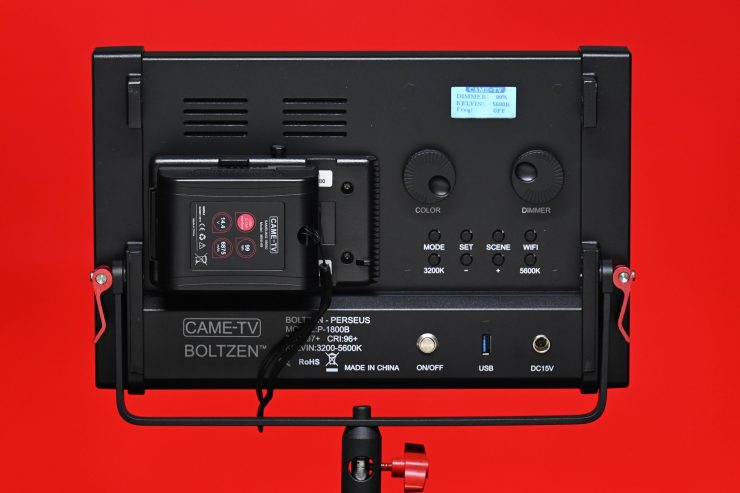
The CAME-TV Boltzen Perseus Bi-Color 55W SMD Soft Travel Lights are a solid offering. They are compact, lightweight, color-accurate and they have a decent output. Yes, the build quality could be better, but they do the job they are were built for and that is pretty much all you can ask for. The remote controller and App can be used, but I found it far easier and quicker just to make manual adjustments rather than go through the set-up and usability issues that come with using the remote and the App.
With traveling lighting kits it is always going to be a case of compromise. It is best to think of the CAME-TV Boltzen Perseus Bi-Color 55W SMD Soft Travel Lights as a Toyota Corolla and not a Dodge Viper. They have been designed to get the job done. They are not fancy, they don’t feature leather seats, a great stereo system, or GPS, but they reliably get you from A to B comfortably and reliably, without emptying your wallet.
The lights have a wide beam angle and you will have to come up with your own DIY solution or buy a third-party lighting modifier if you want to solve that issue. Yes, you can just flag them off with some black wrap, but some people may not want to go through the hassle of having to do that.
The foldable yoke frame is a nice concept and despite some of its limitations, it works well with lights such as these.
With a lot of modern LED lights, the quality of the LEDs being used is very similar, even across the price spectrum. What separates the lights comes down to build quality, features, and usability.
The CAME-TV solution isn’t fancy and it isn’t as polished as some other fixtures, but it does make a lot of sense as a traveling lighting kit. I don’t know of any other lighting kit of this size that features three-panel lights that have proper yoke frames and in-built battery plates. Despite its flaws, the CAME-TV Boltzen Perseus Bi-Color 55W SMD Soft Travel Light kit offers great value for money and it is certainly a good option if you are looking for a portable, power-efficient, color-accurate set of travel lights that can be remotely powered via flight safe batteries.
Like what we do and want to support Newsshooter? Consider becoming a Patreon supporter and help us to continue being the best source of news and reviews for professional tools for the independent filmmaker.

